


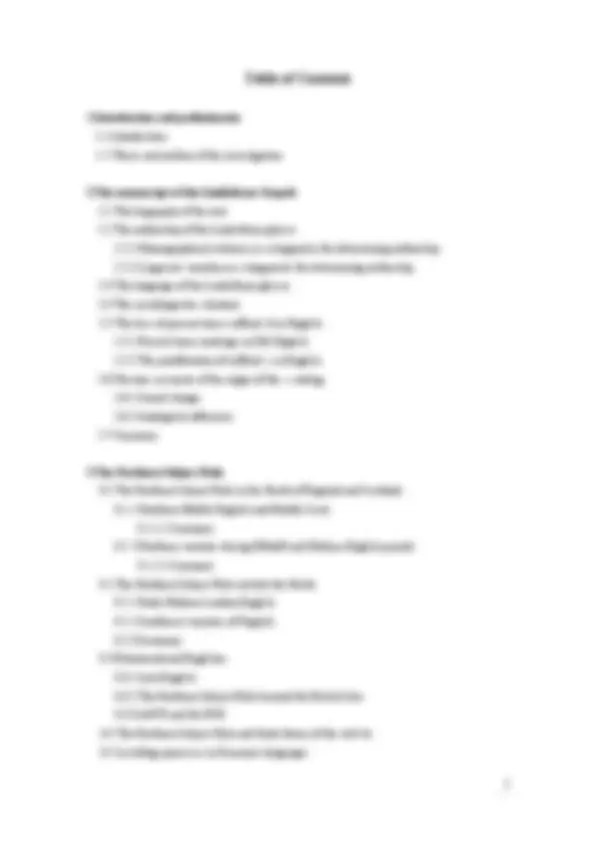

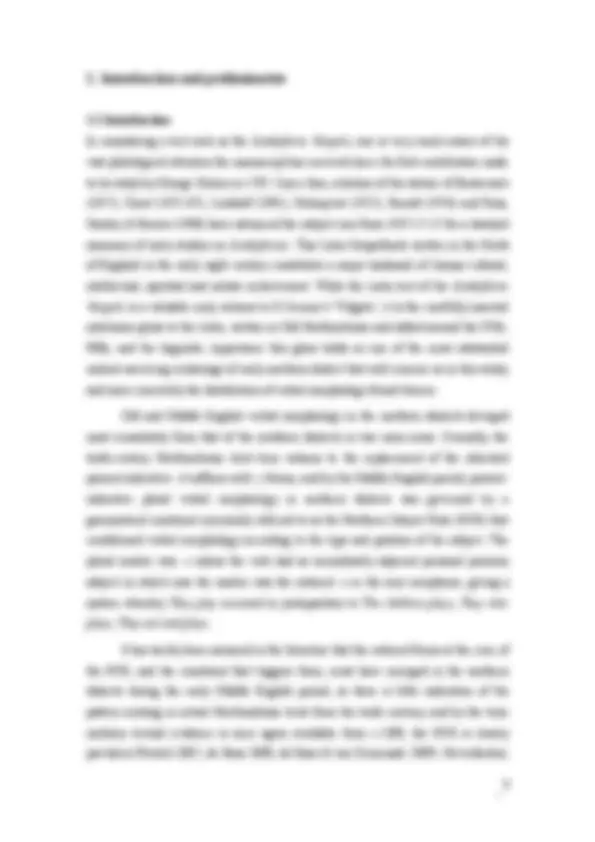
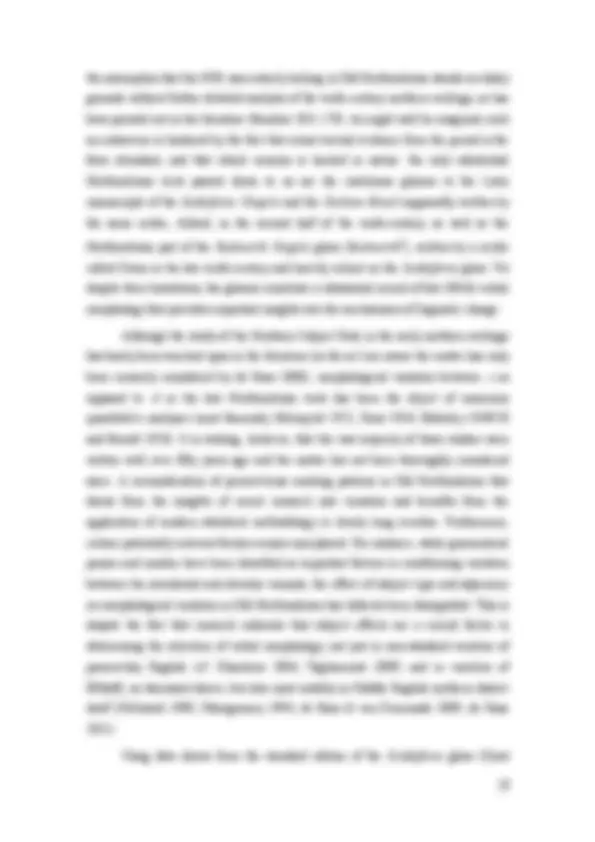
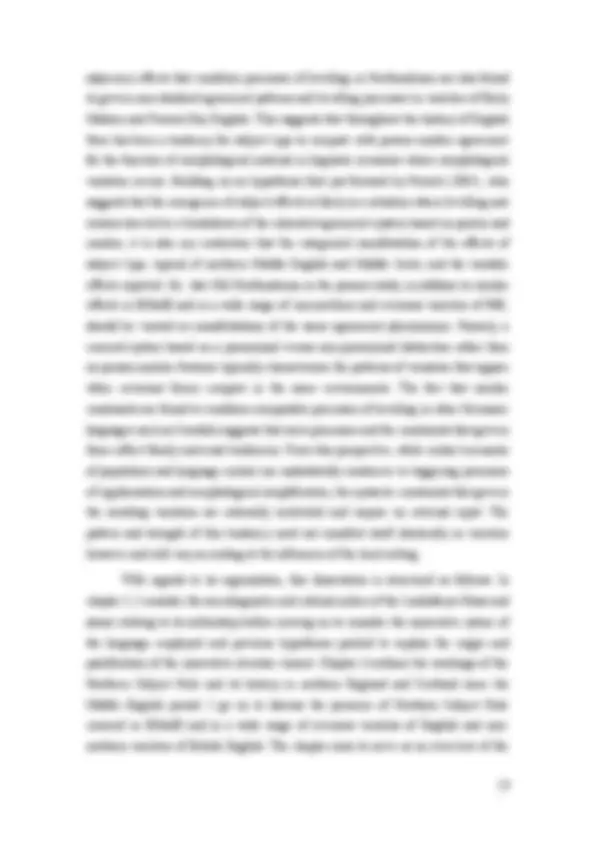
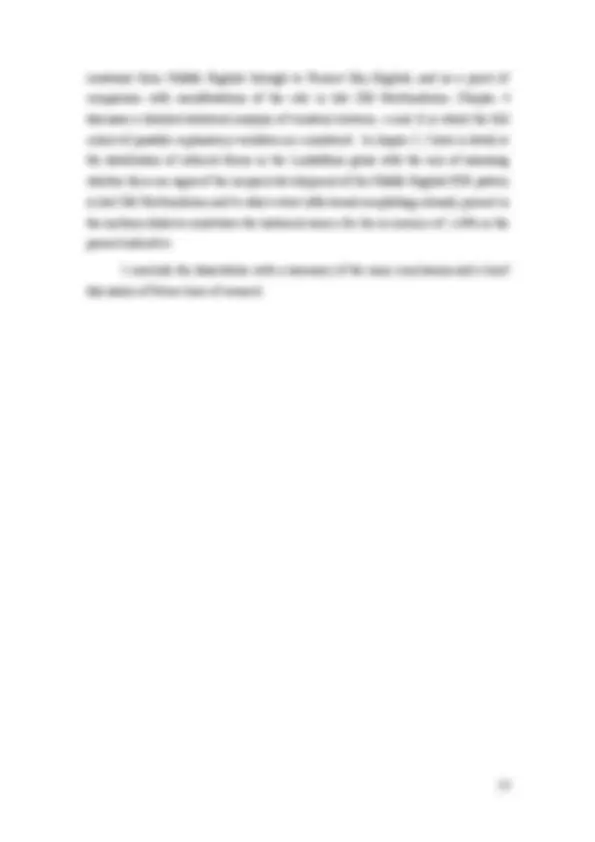
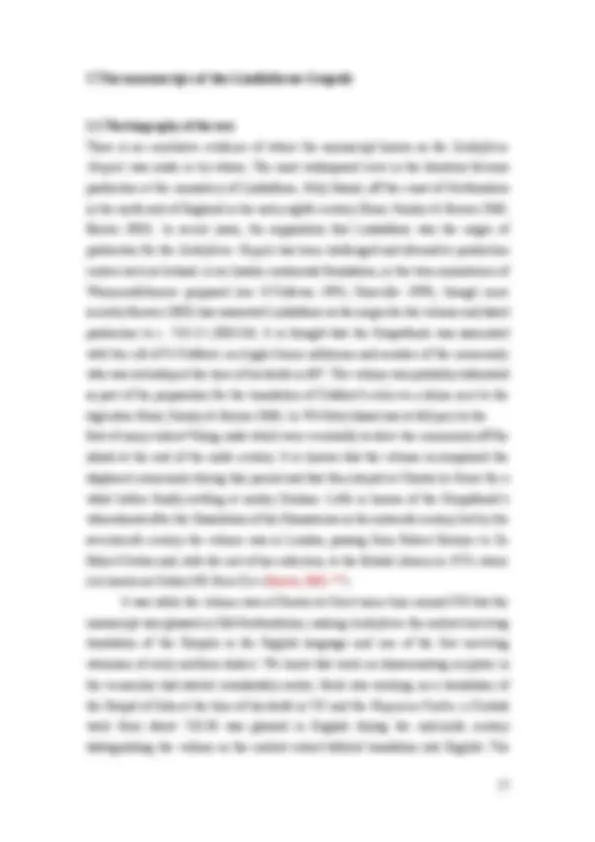
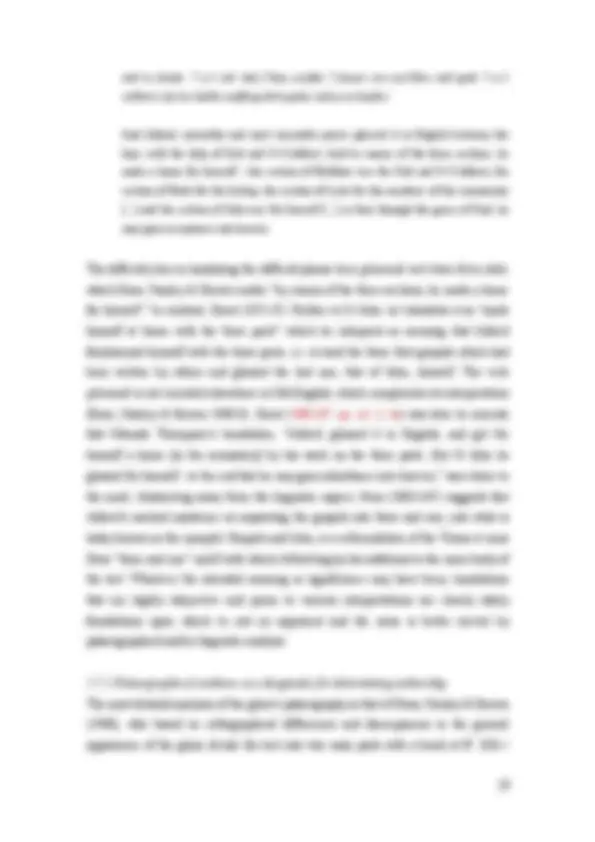
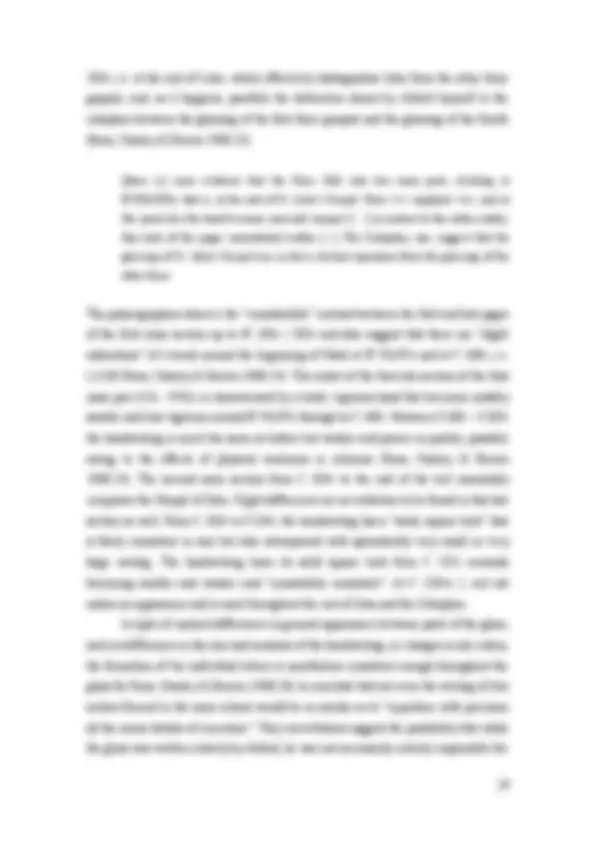
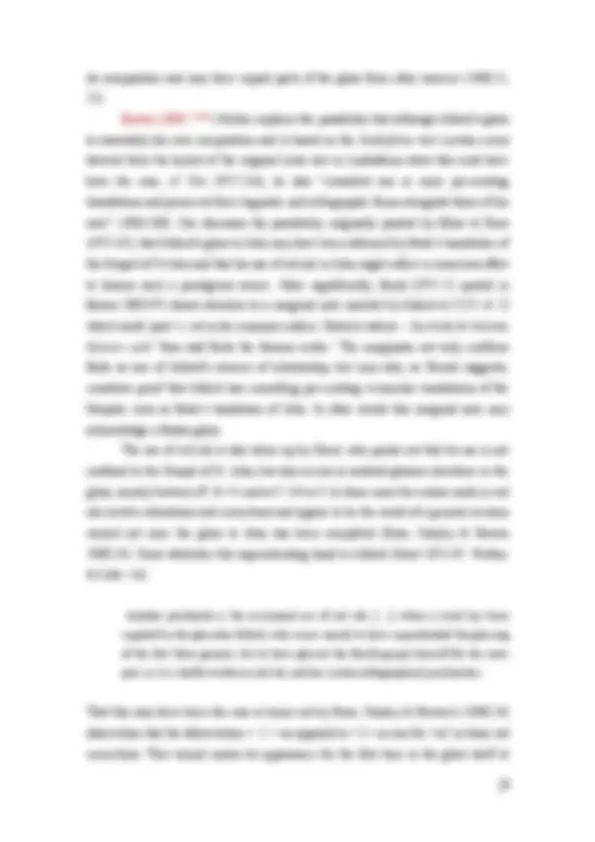
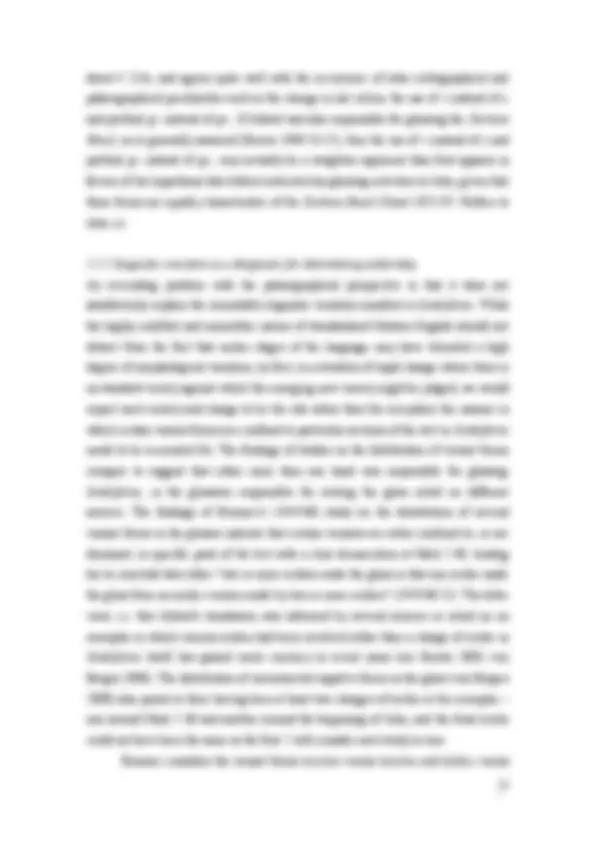
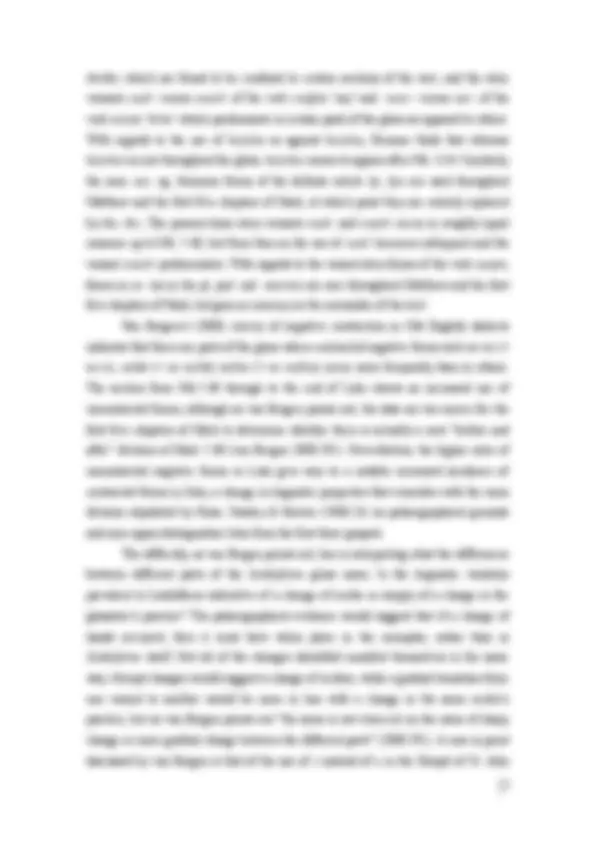
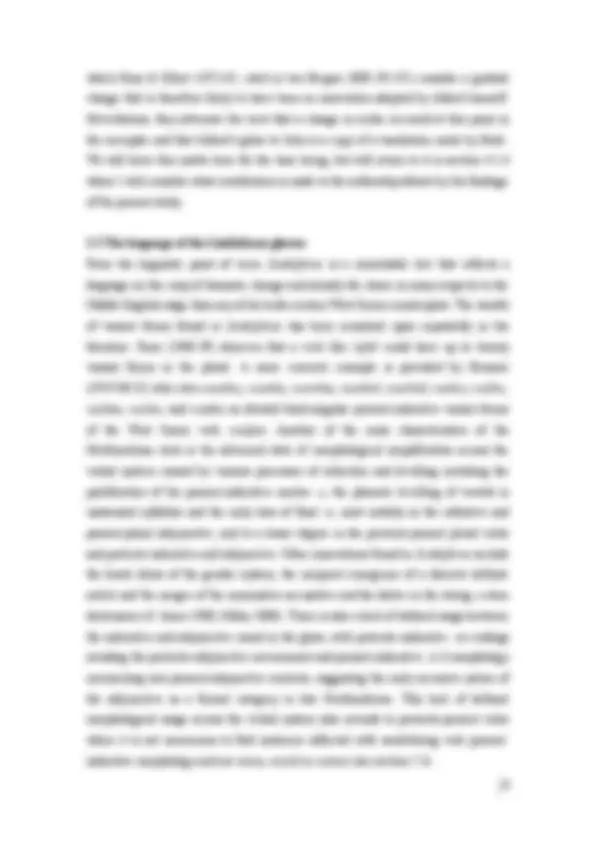
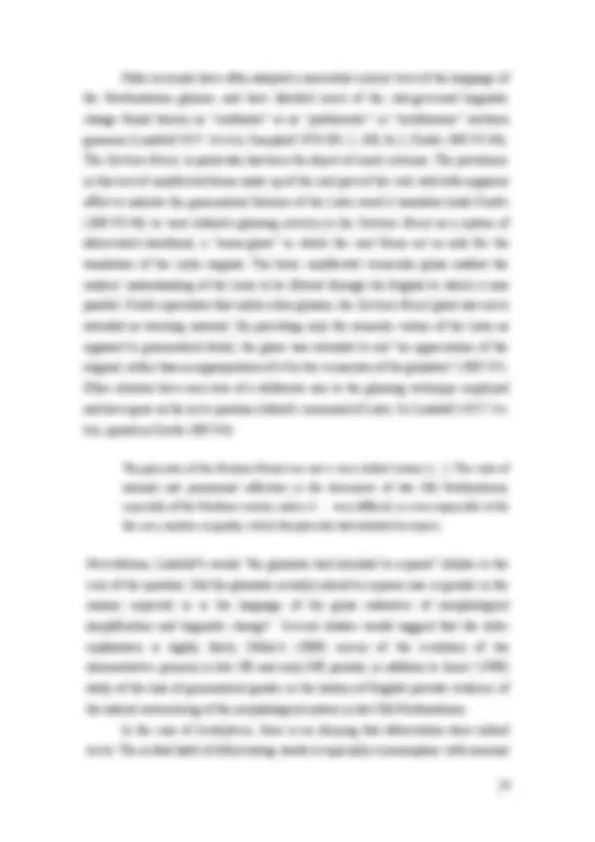
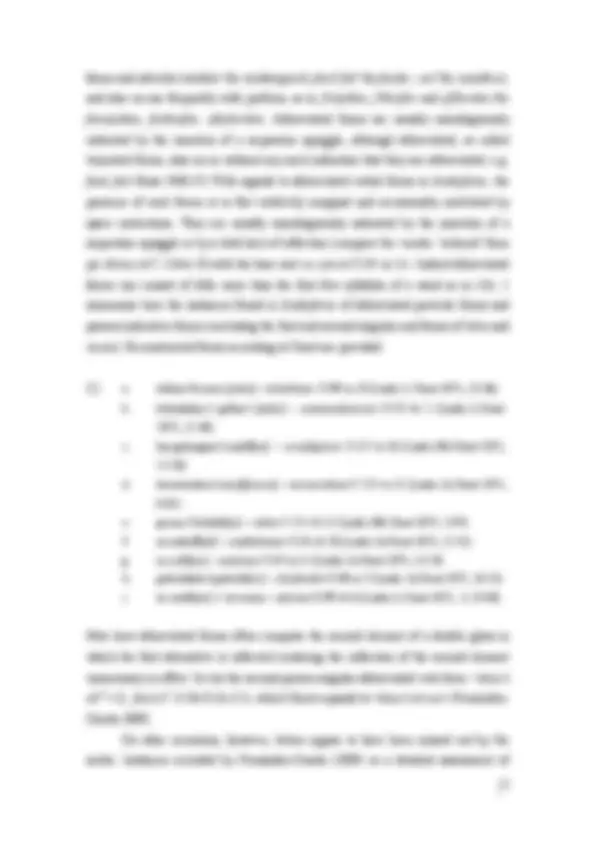

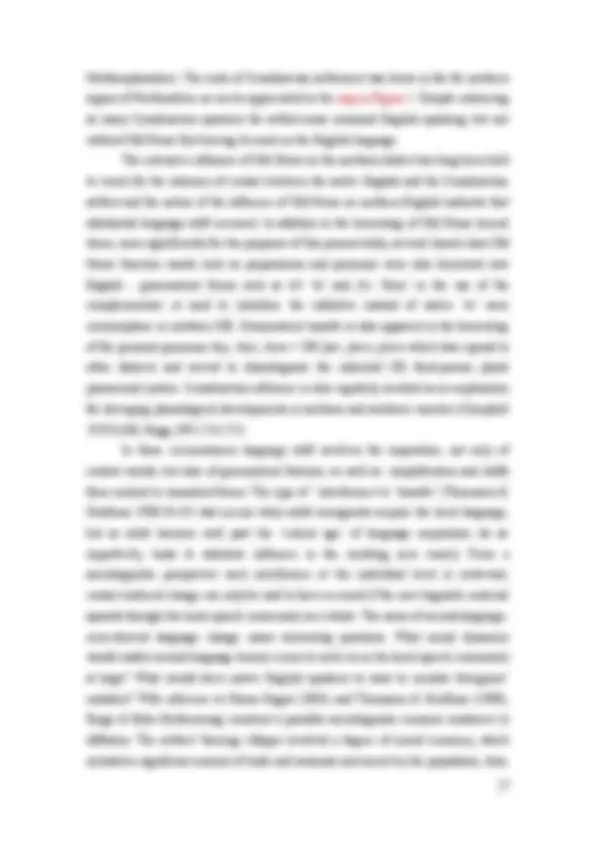
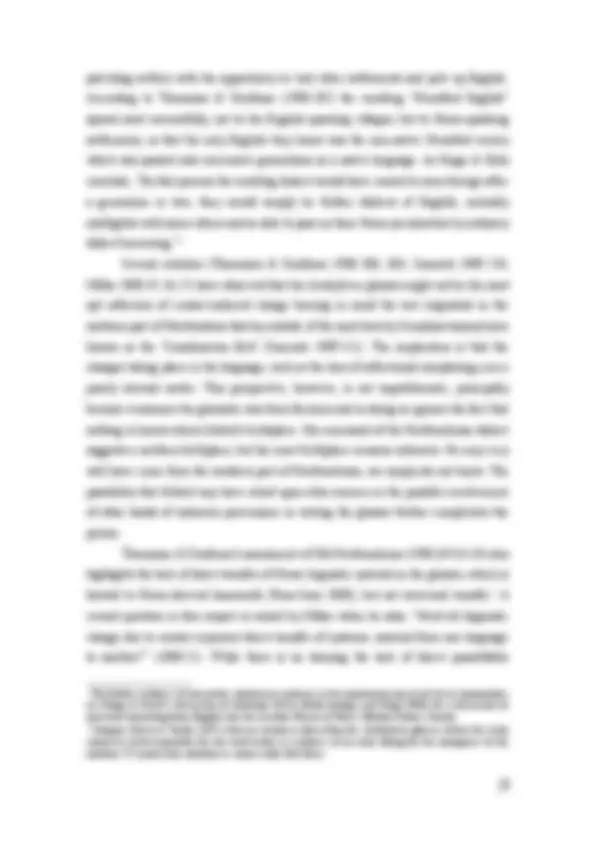
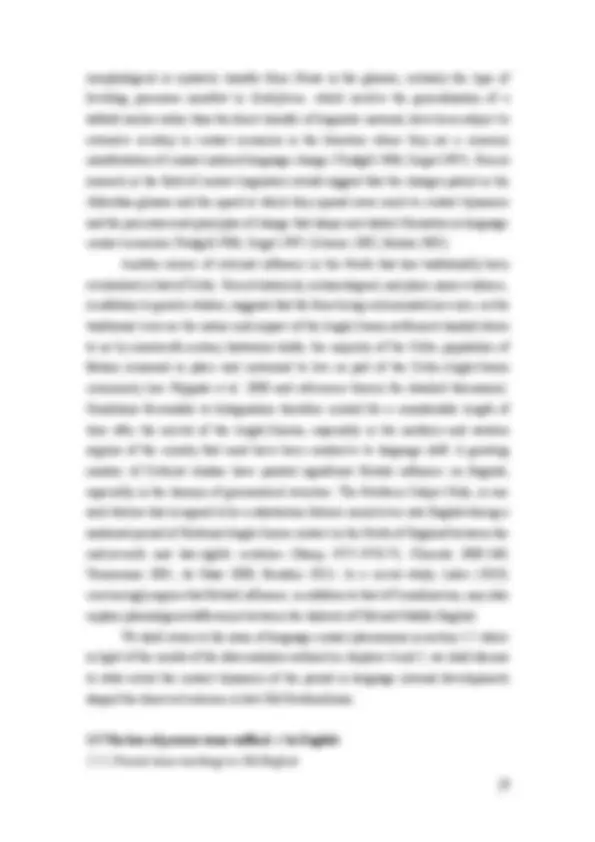
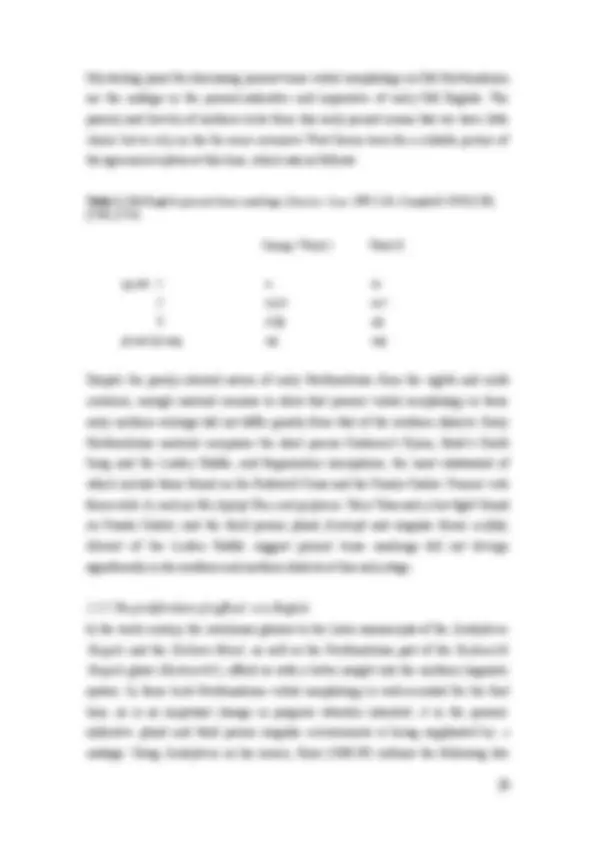
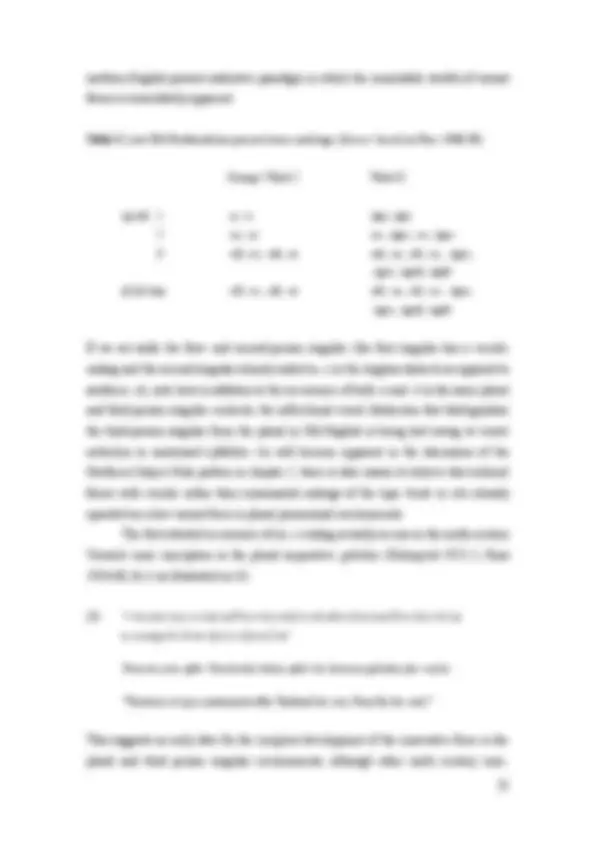
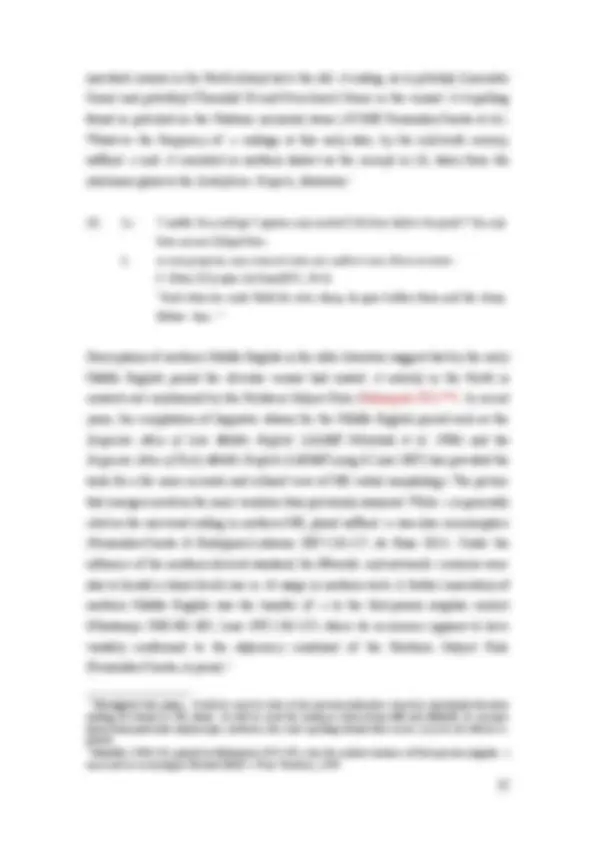
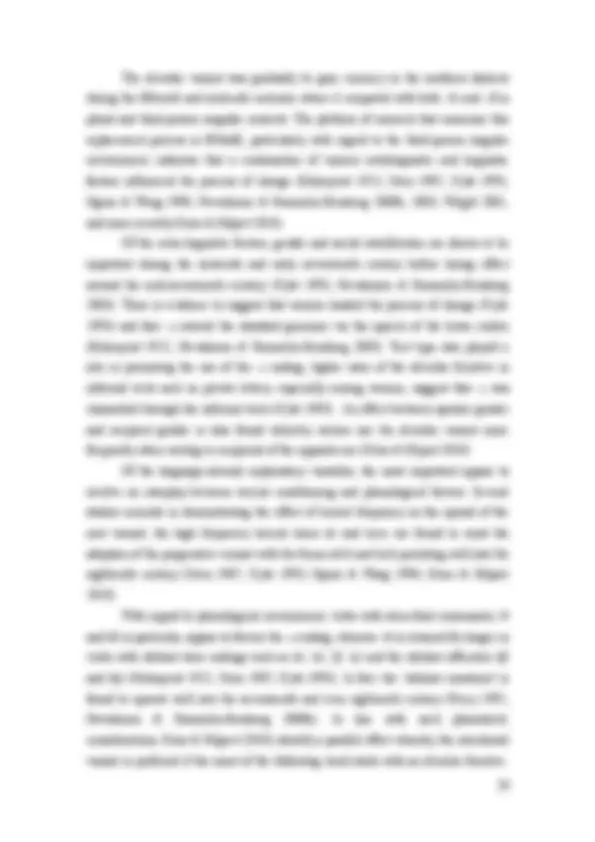
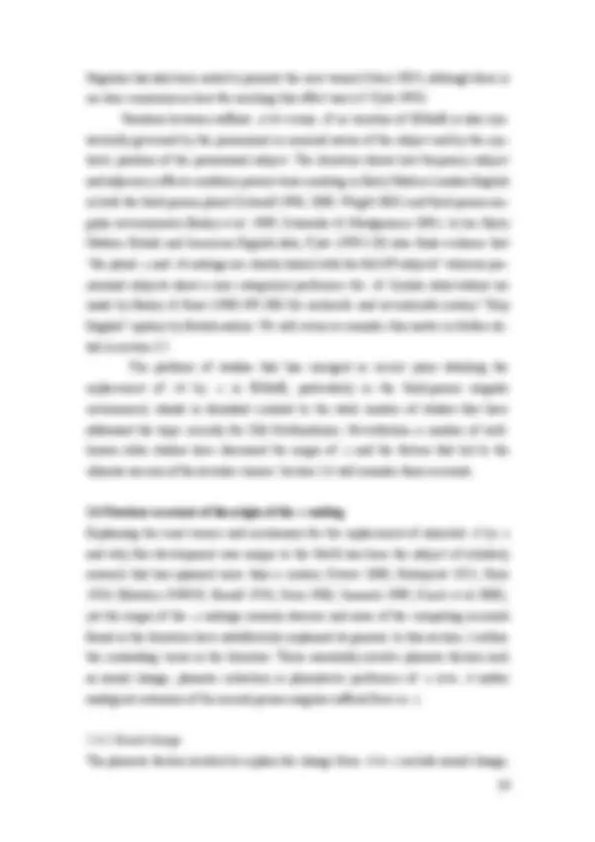
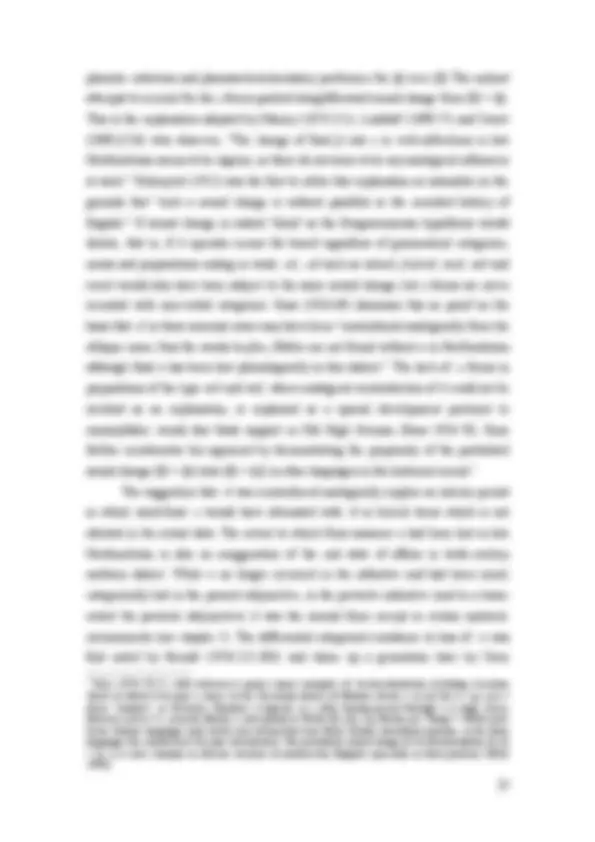
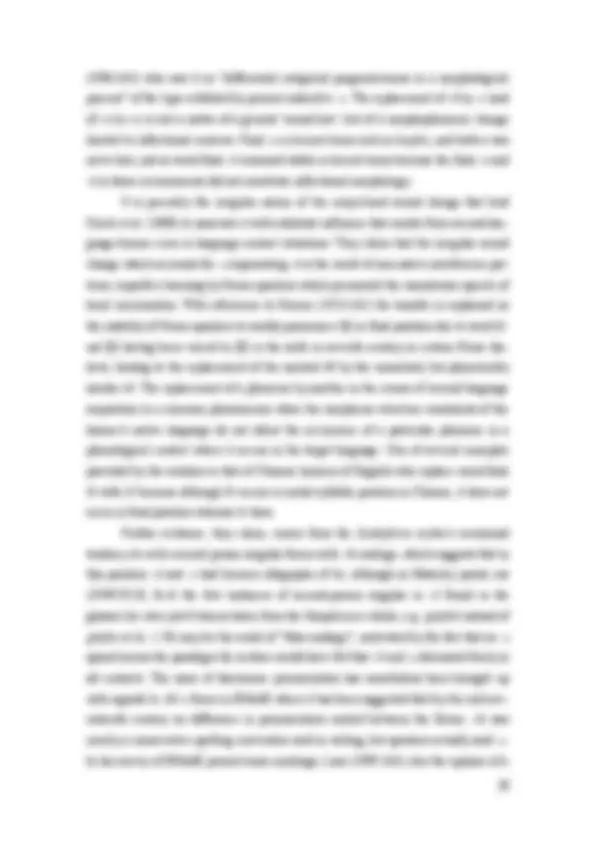
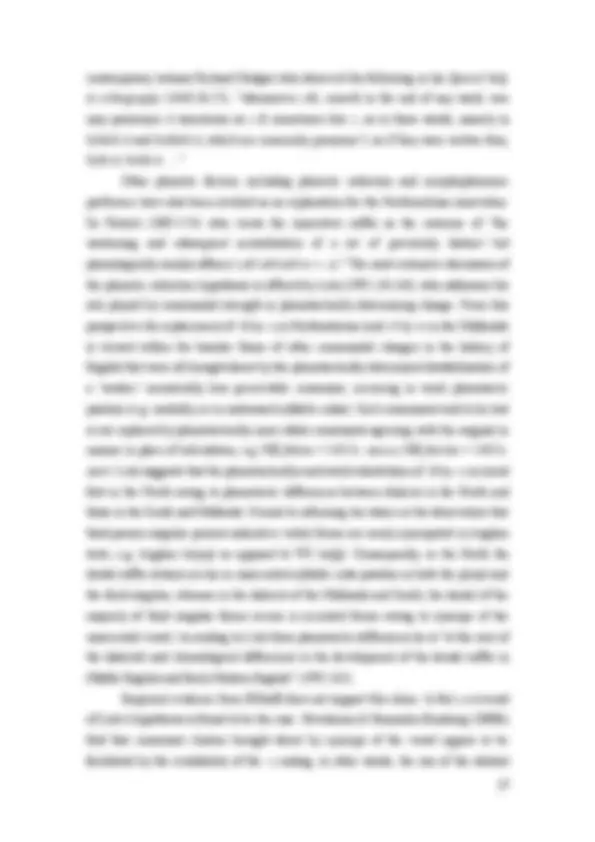
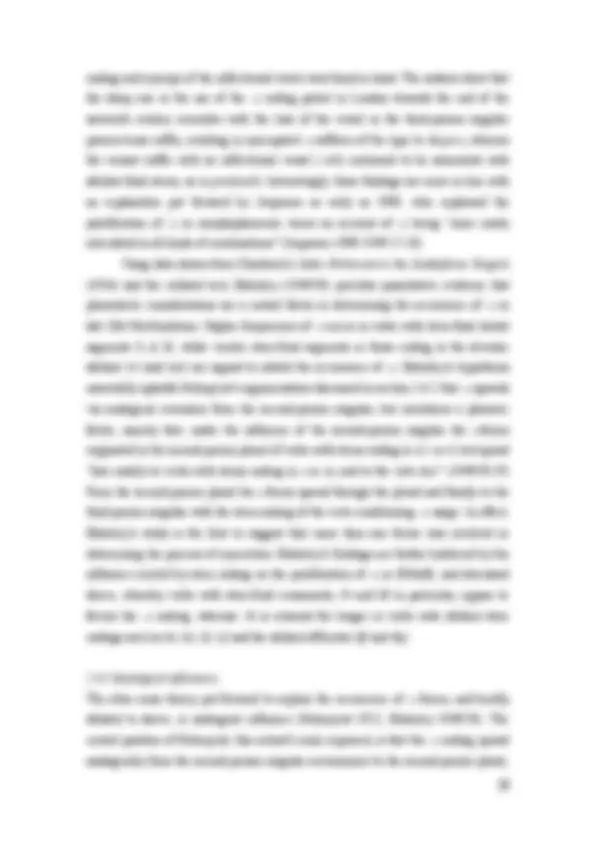
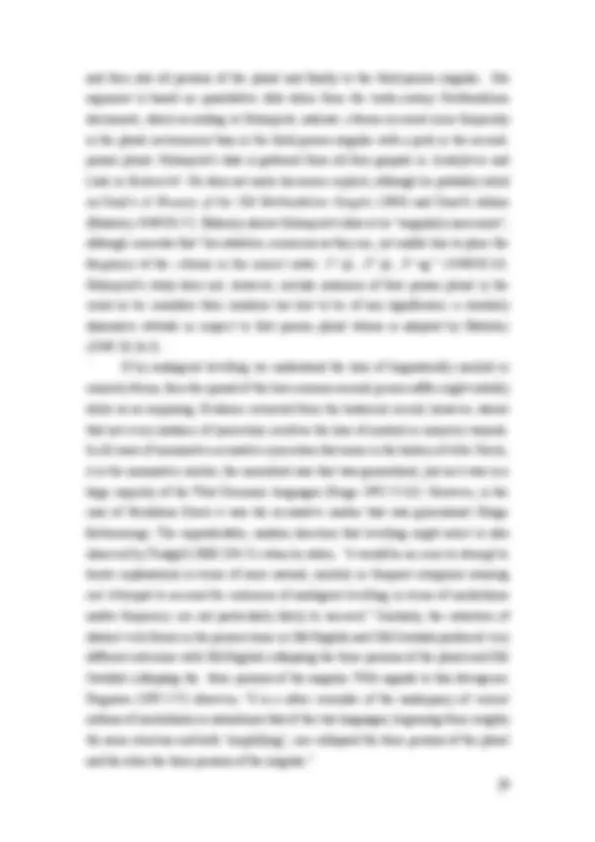
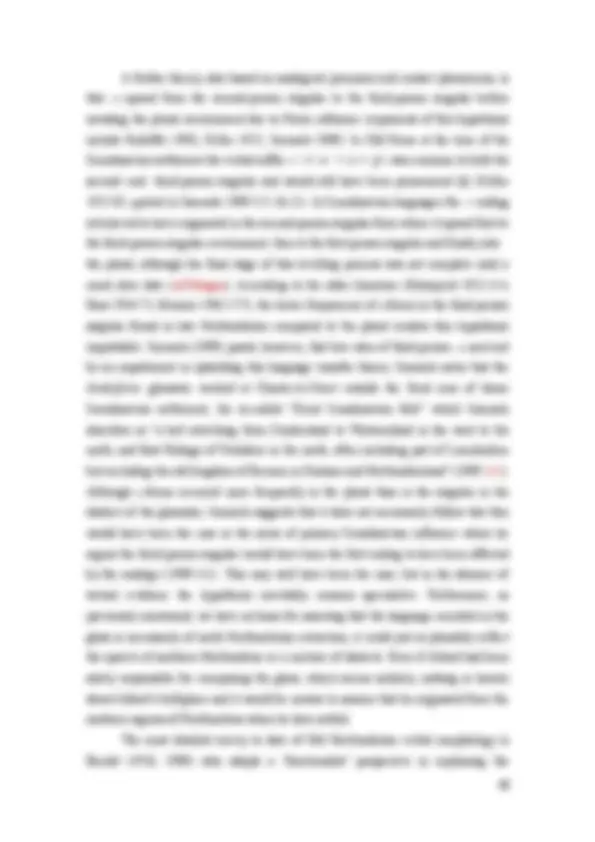
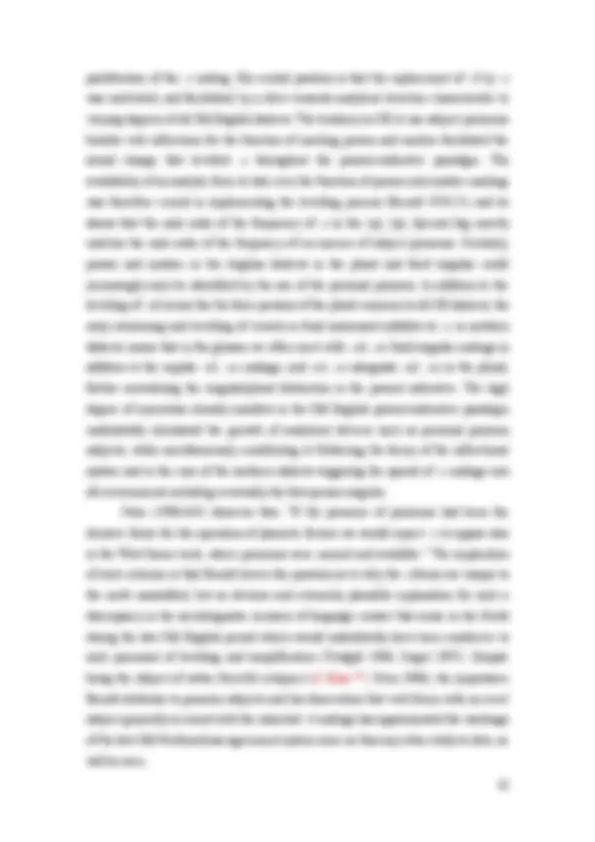
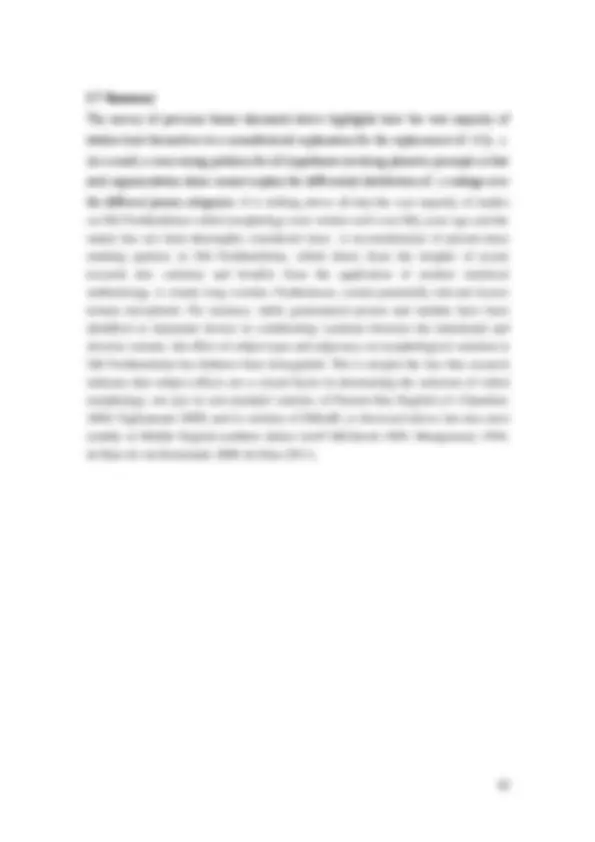
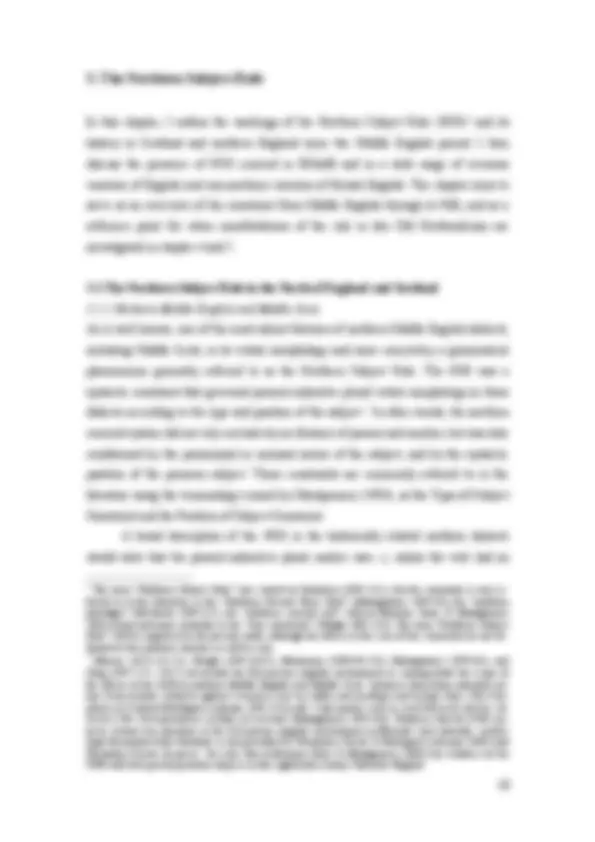
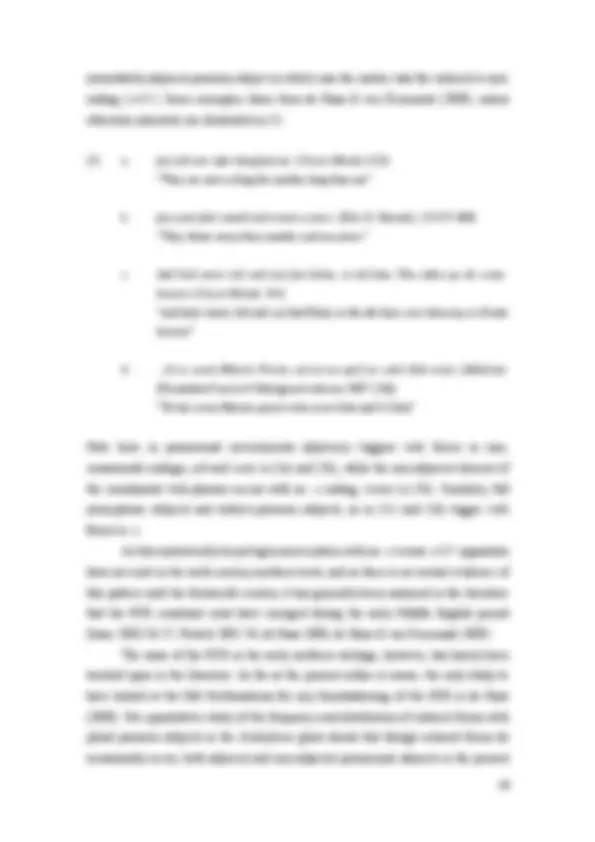
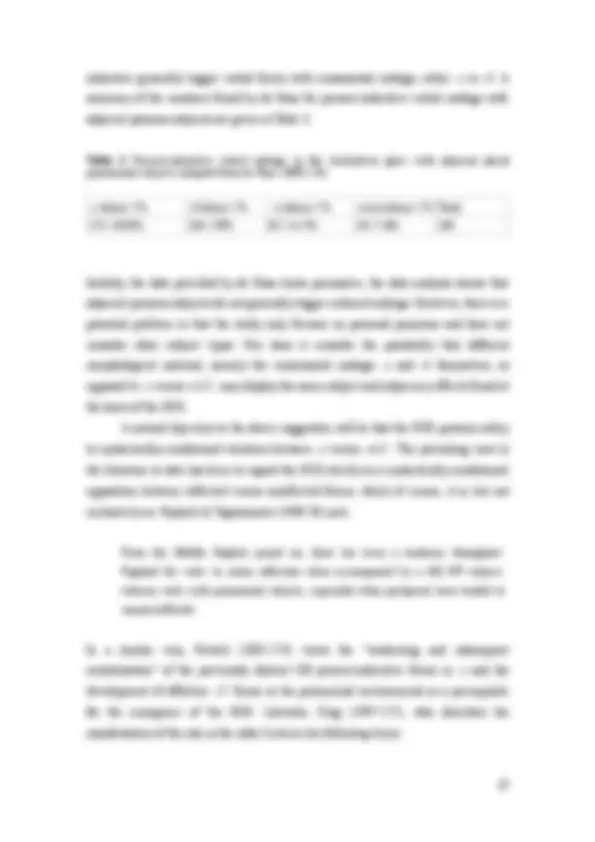
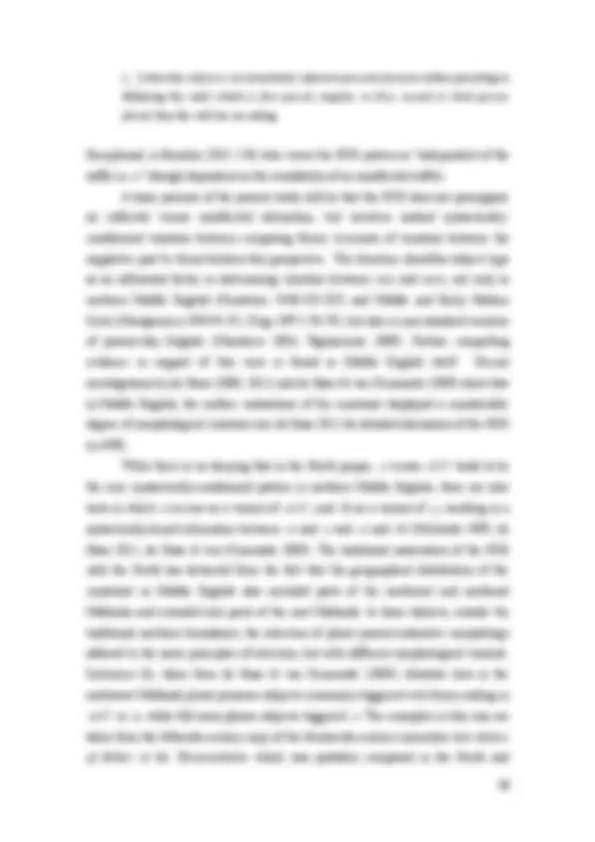
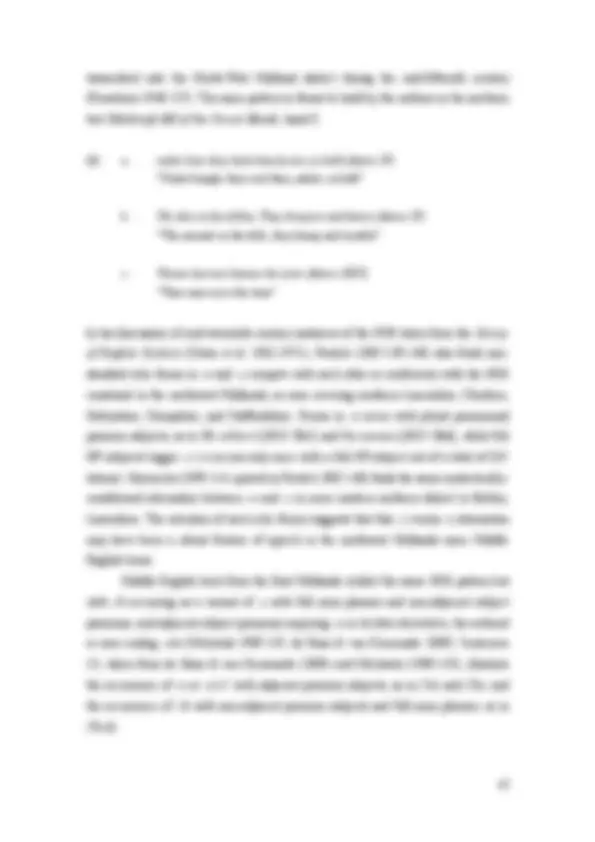
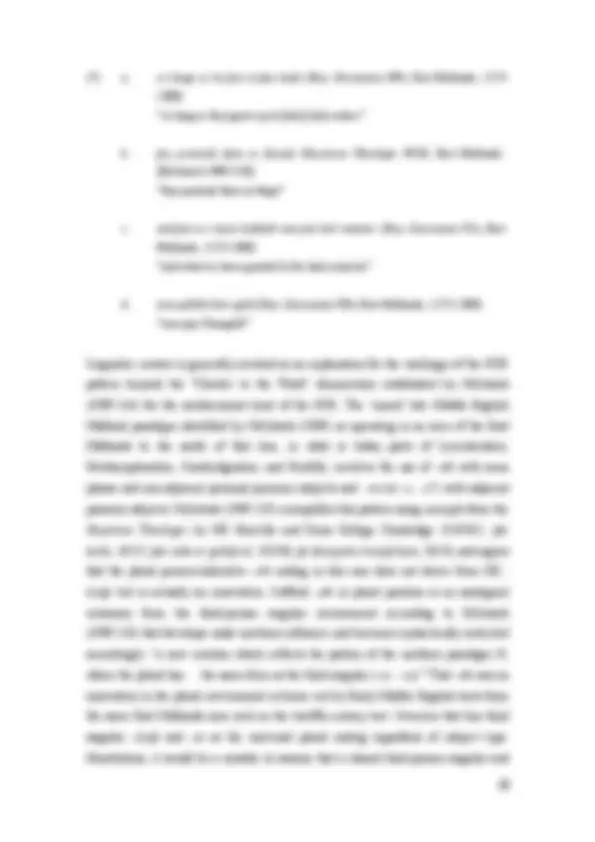
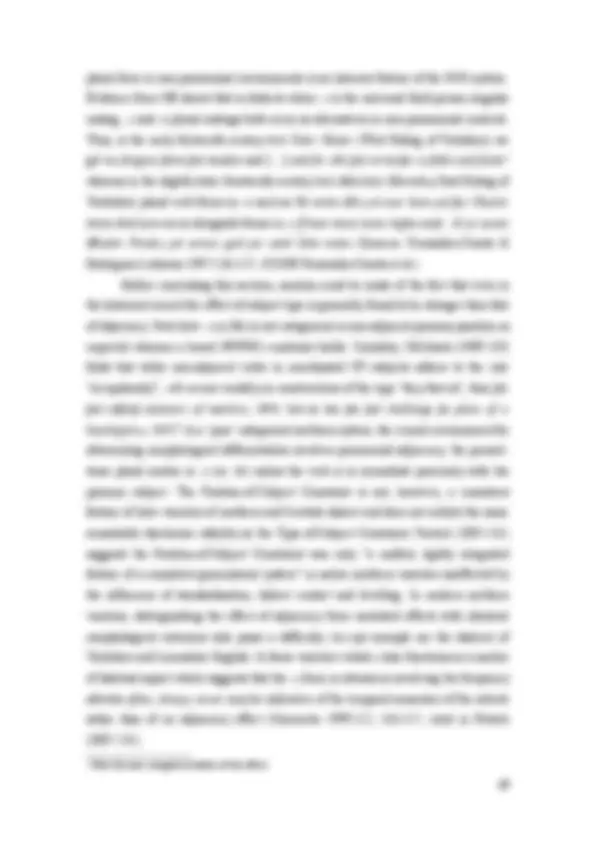
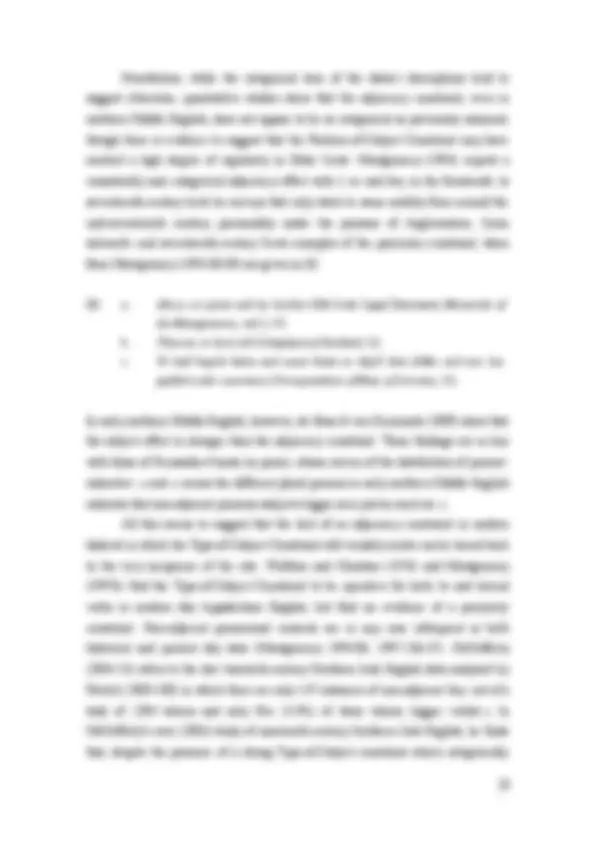
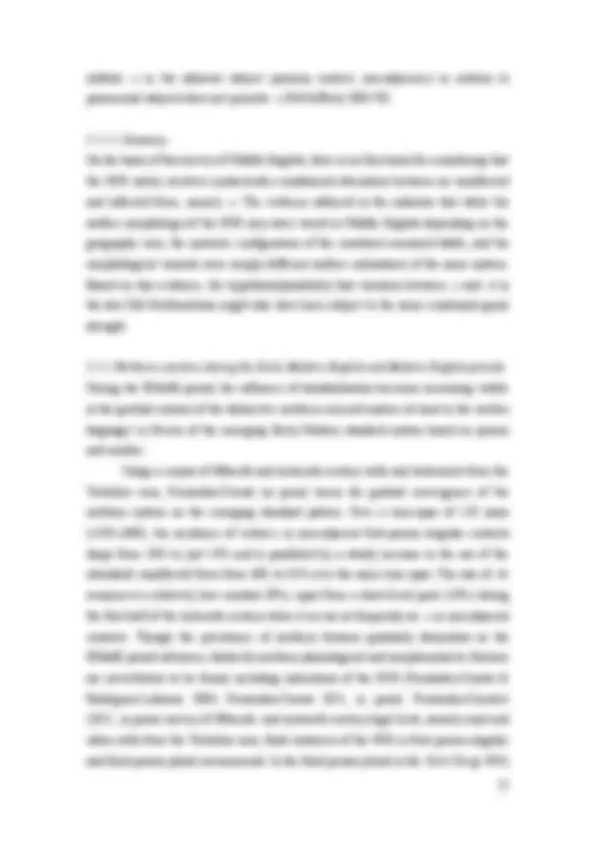
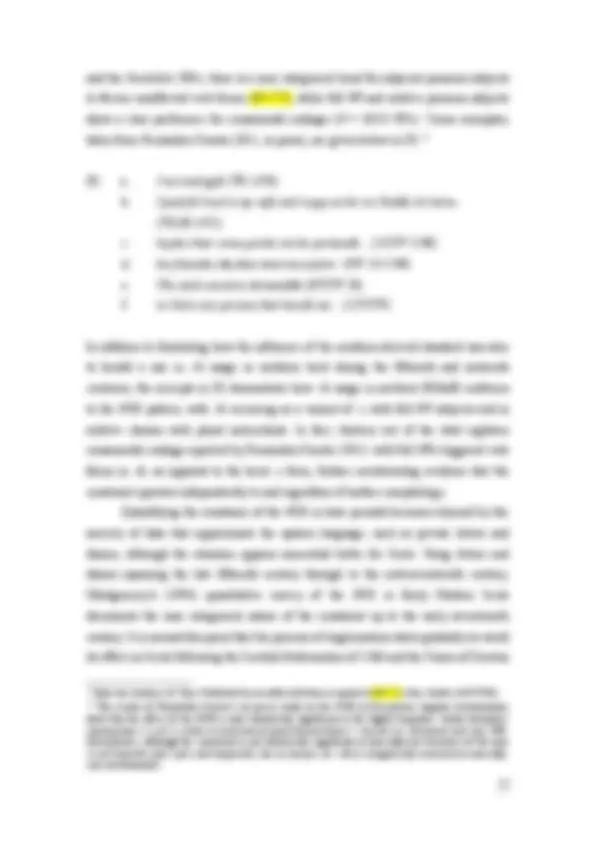
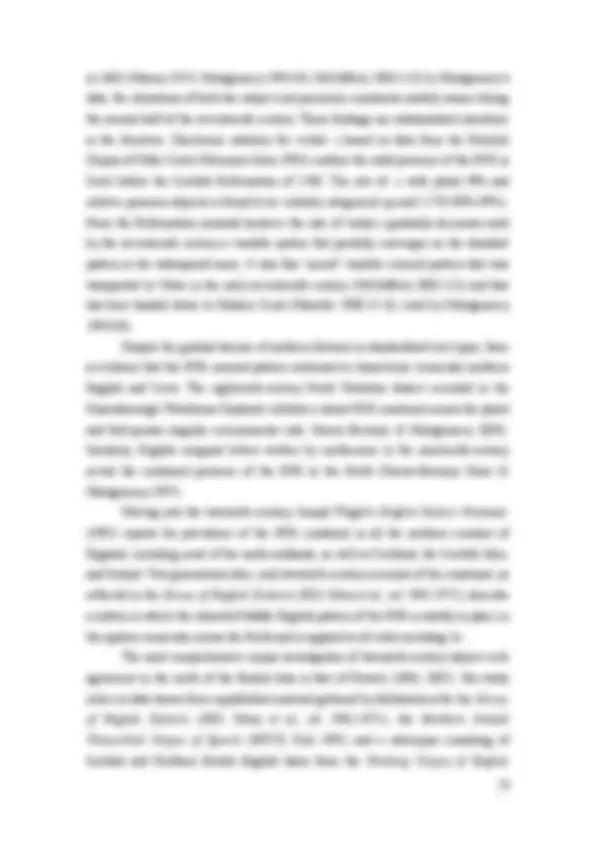
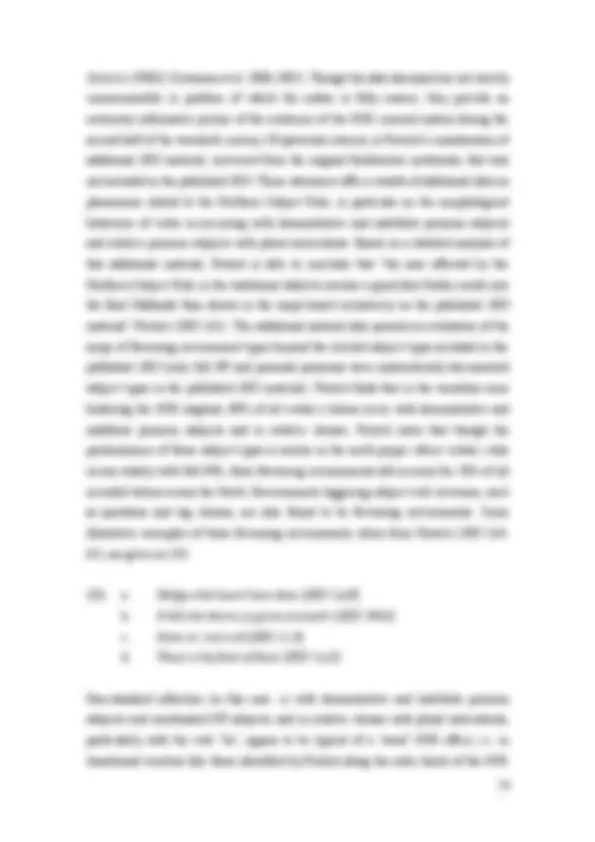
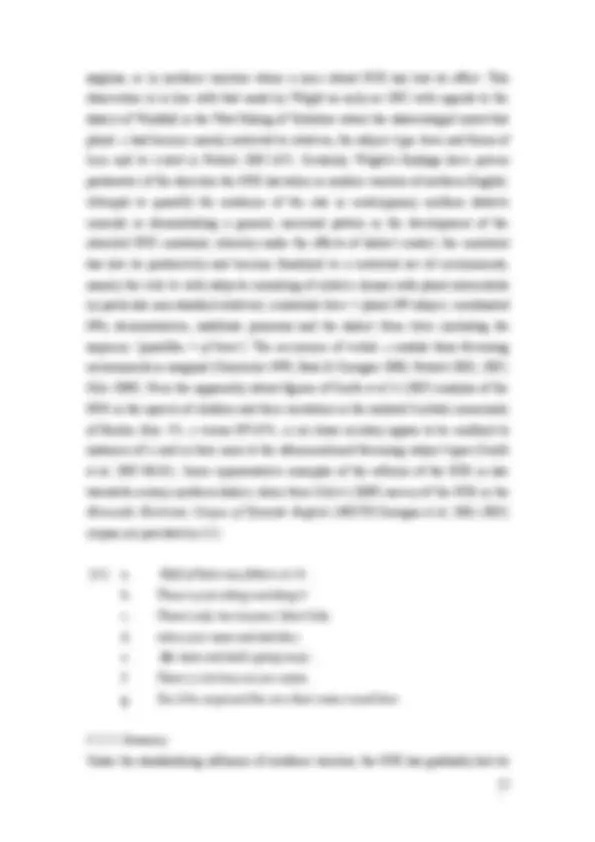
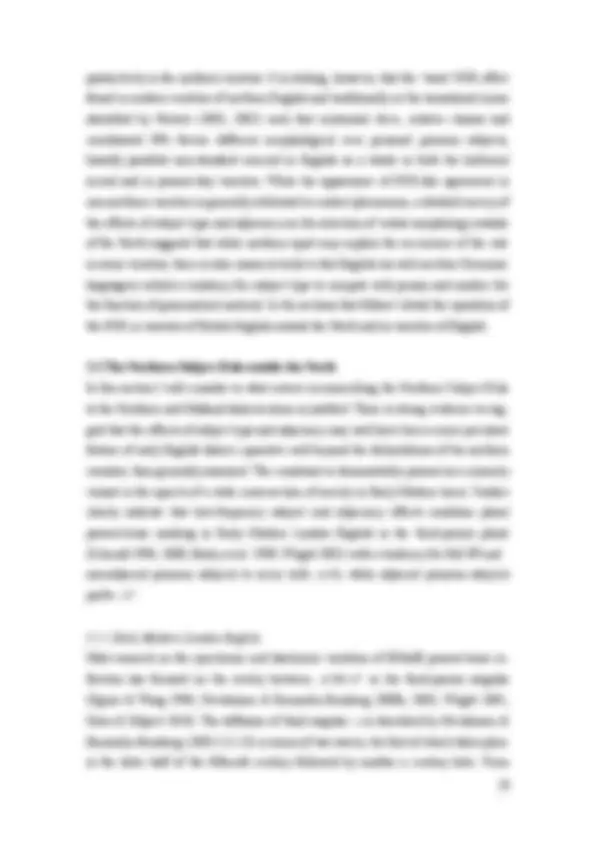
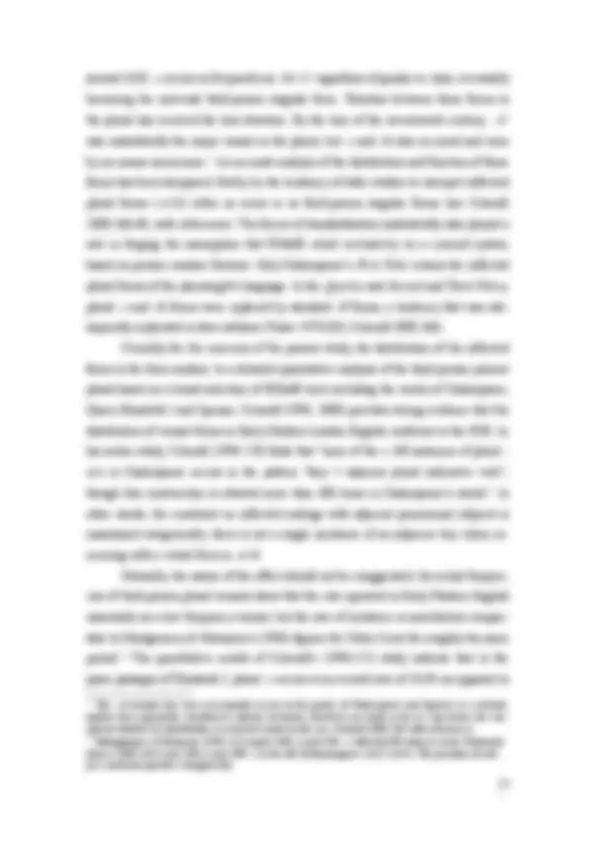
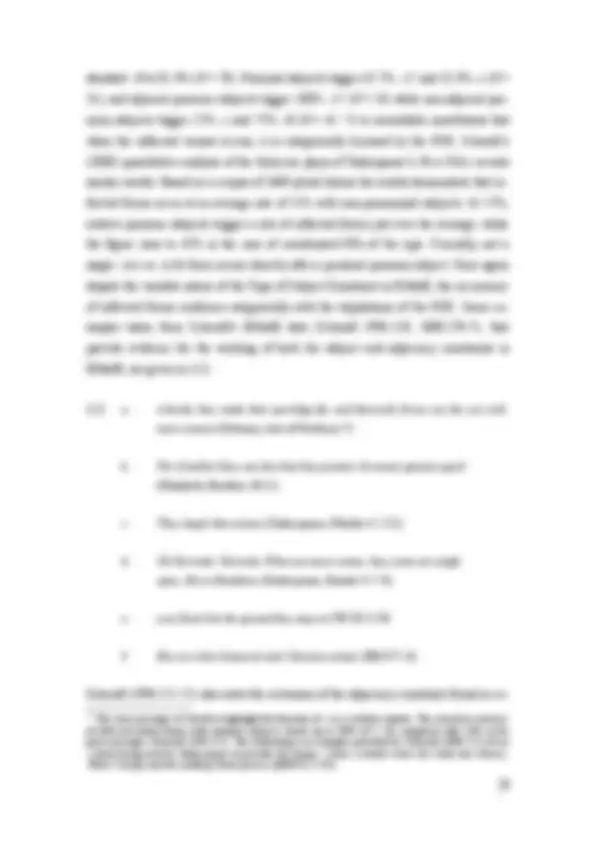
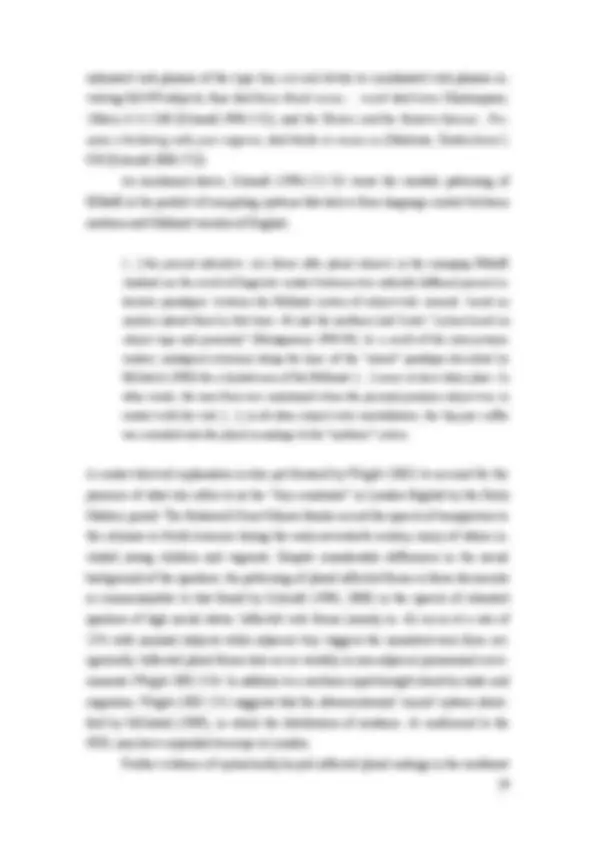
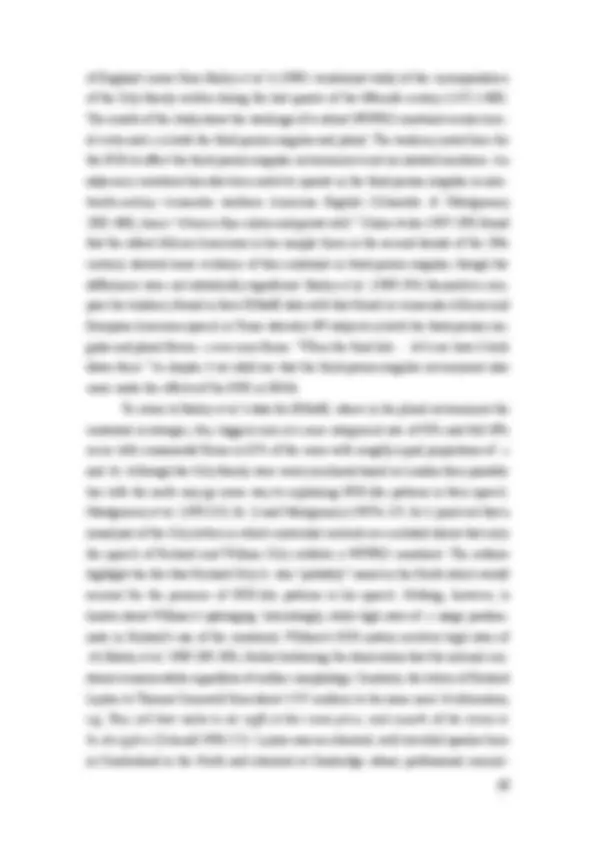
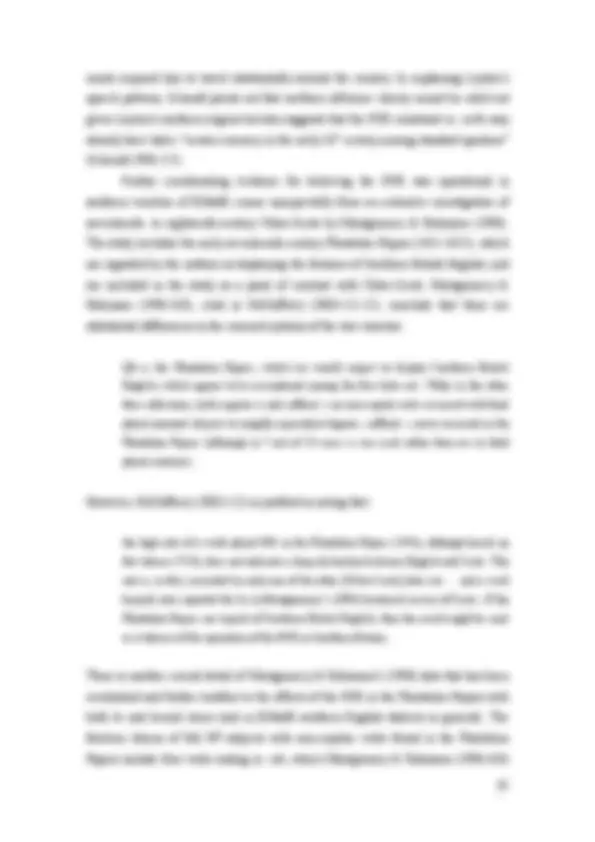
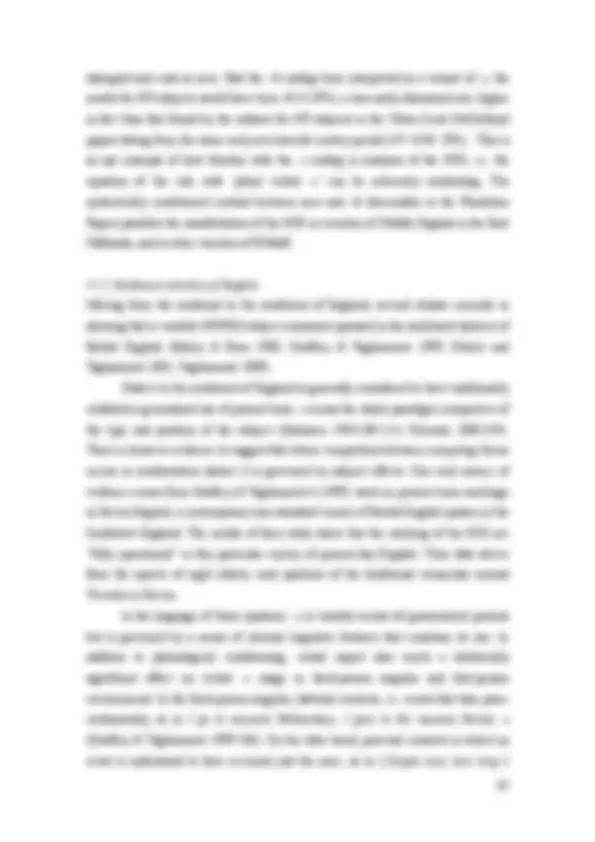
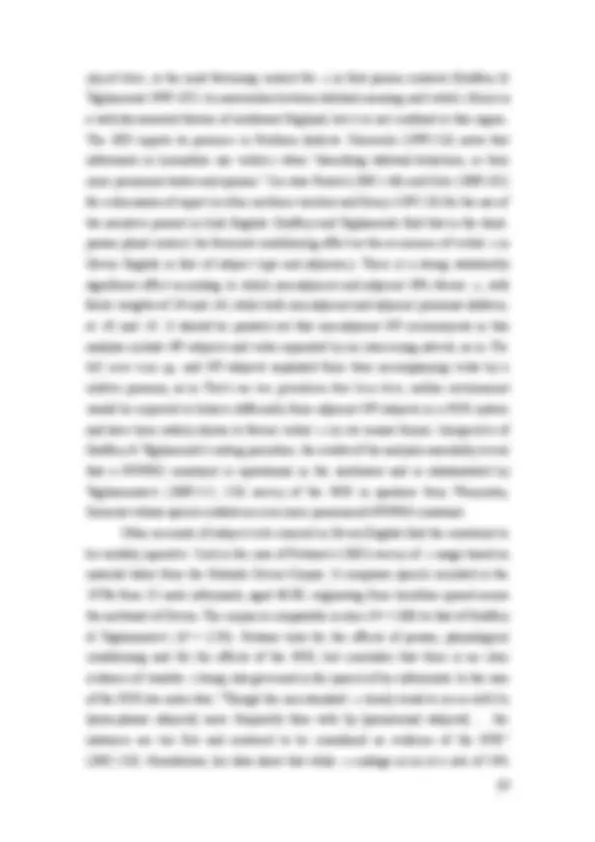
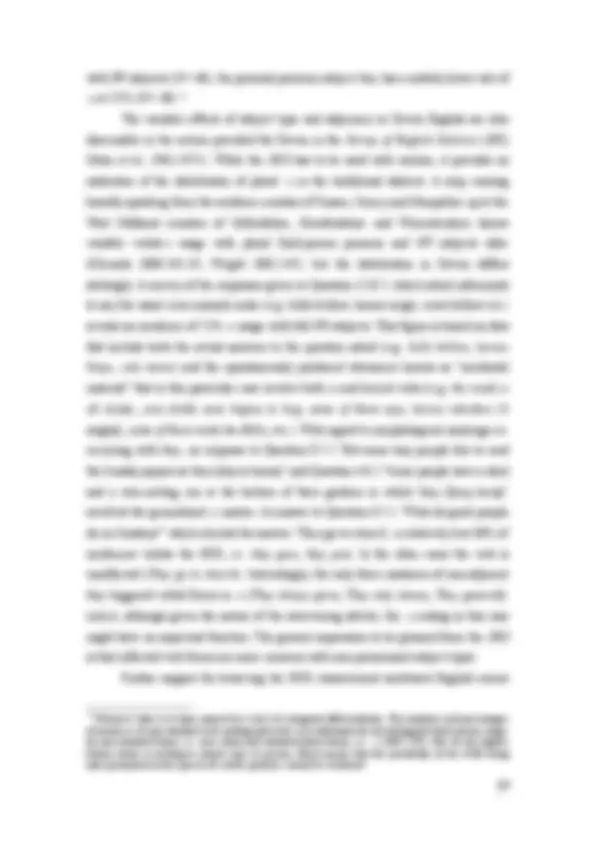
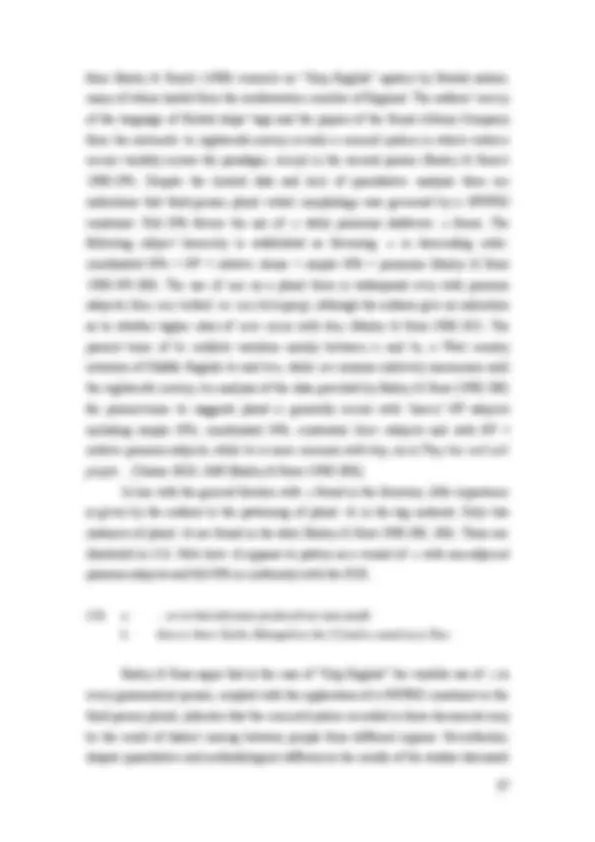
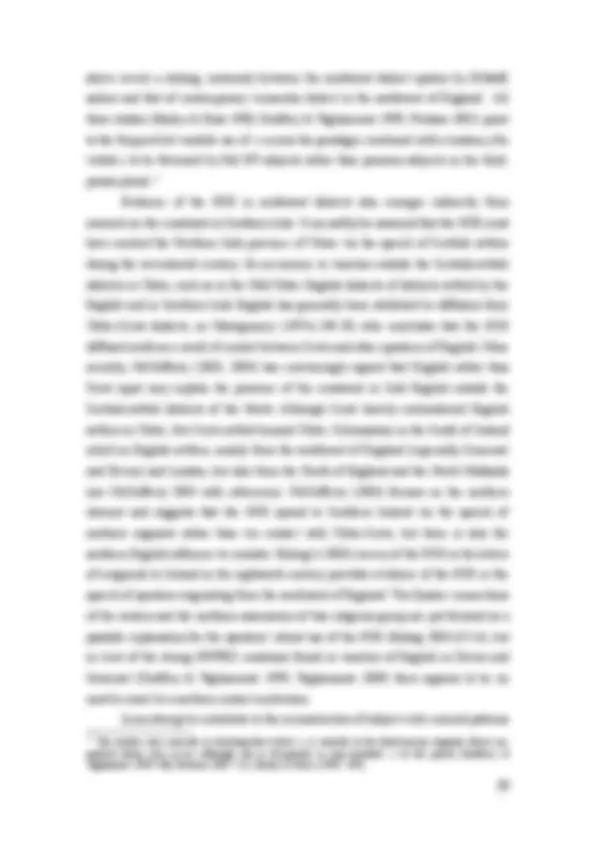
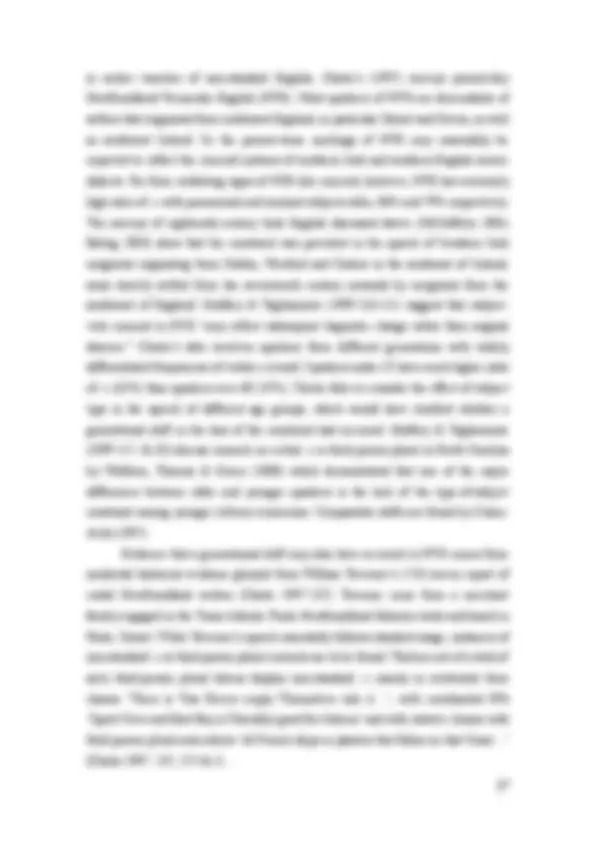
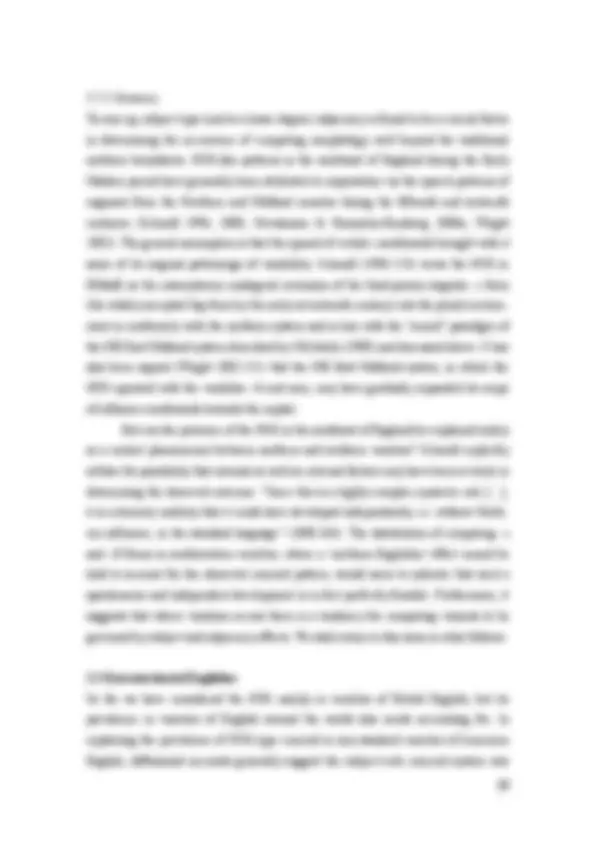
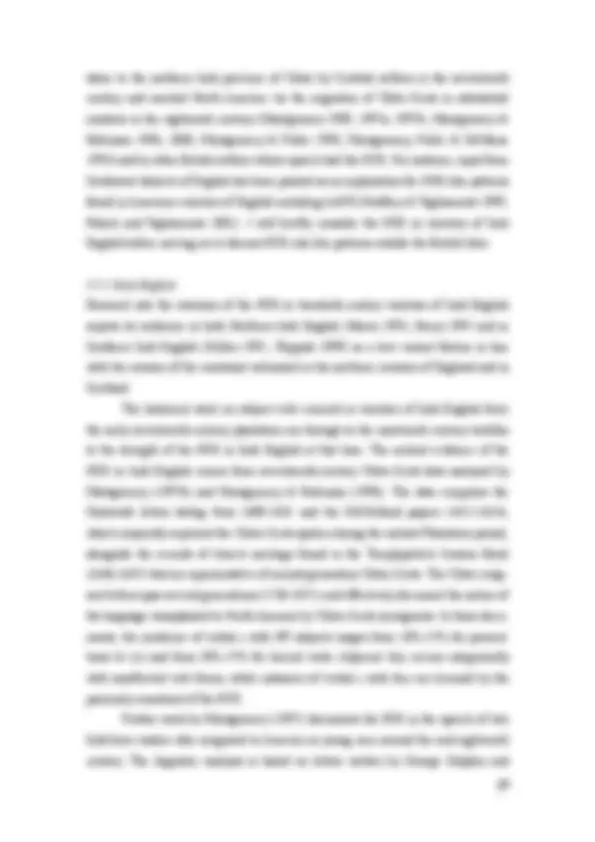
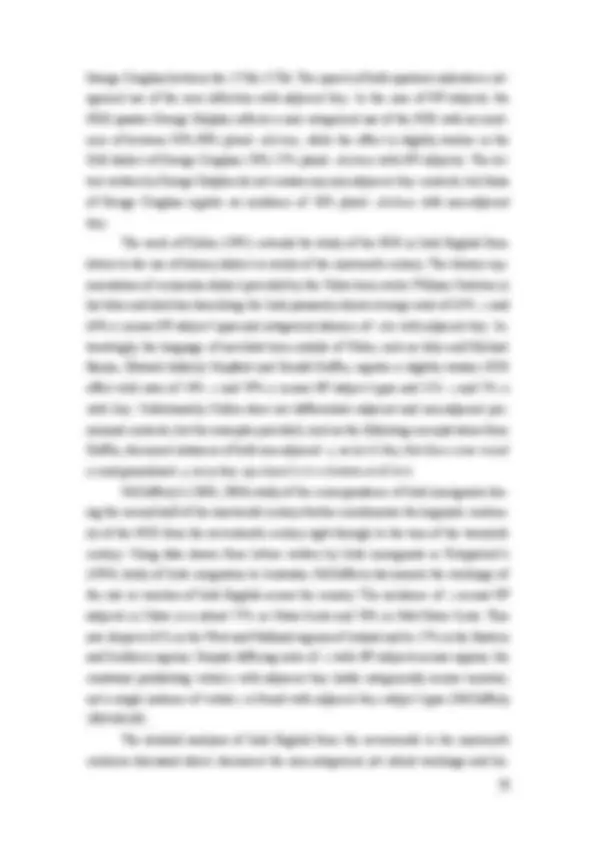
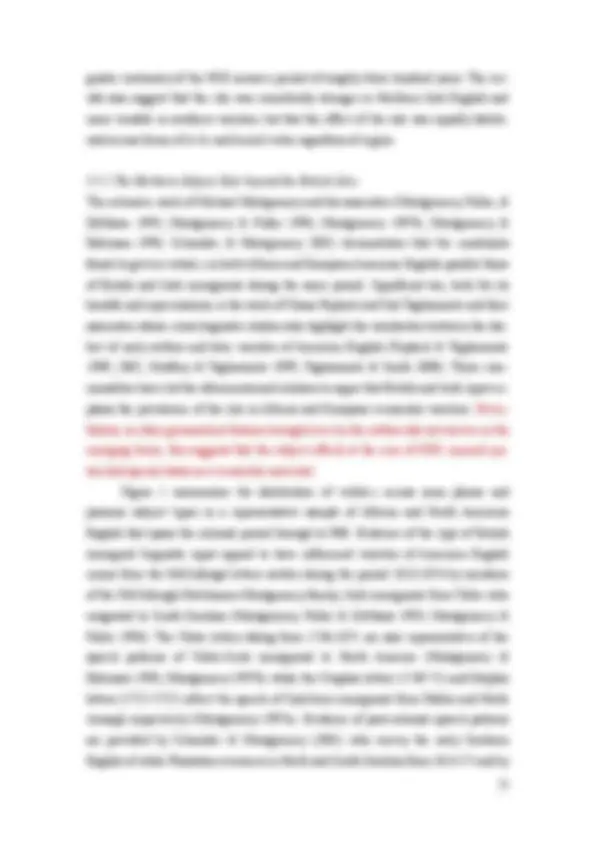
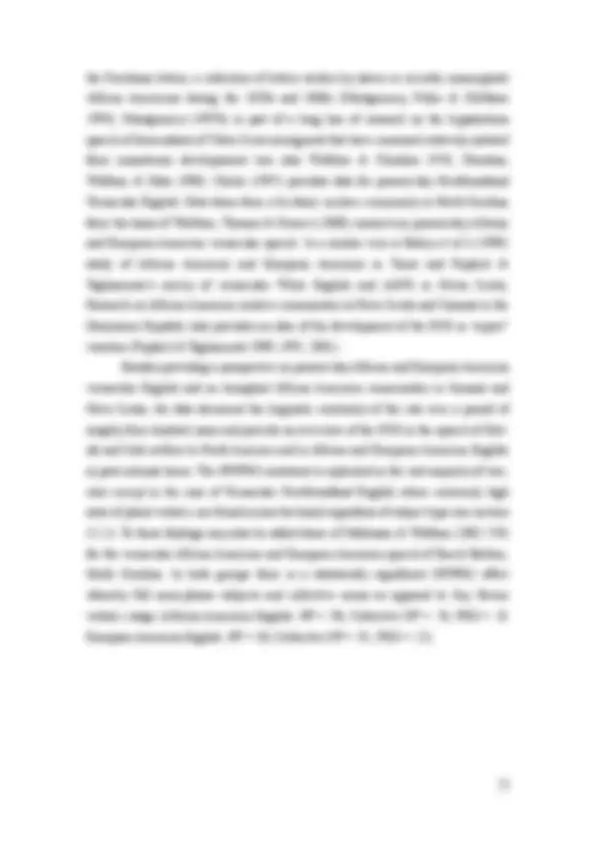
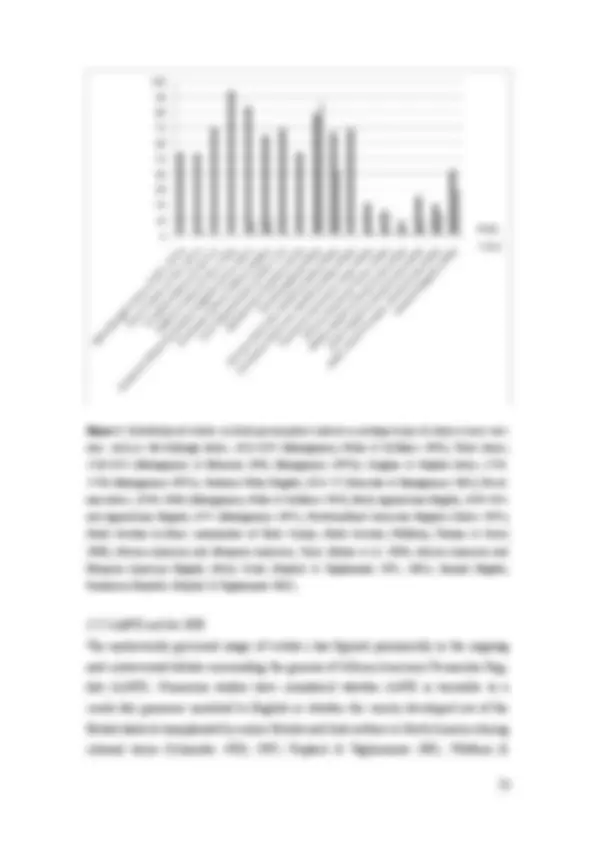
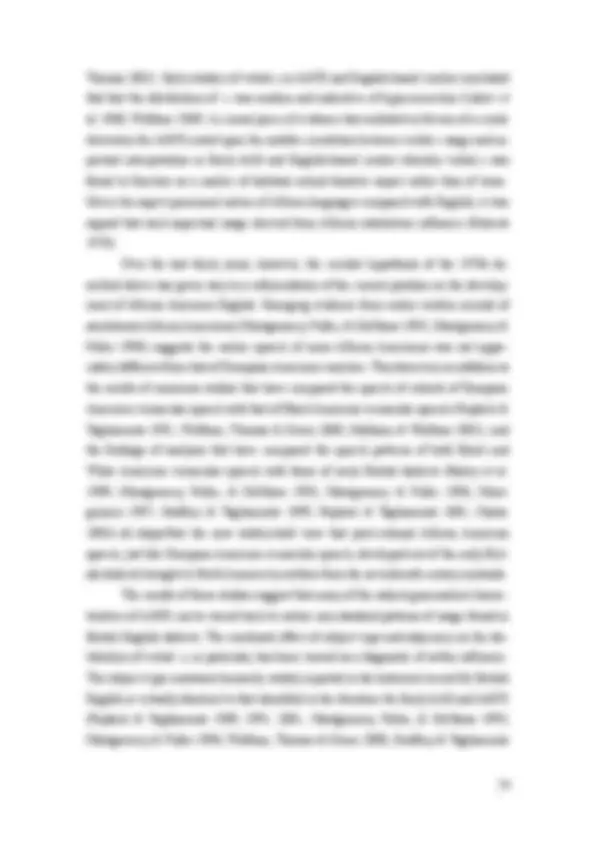
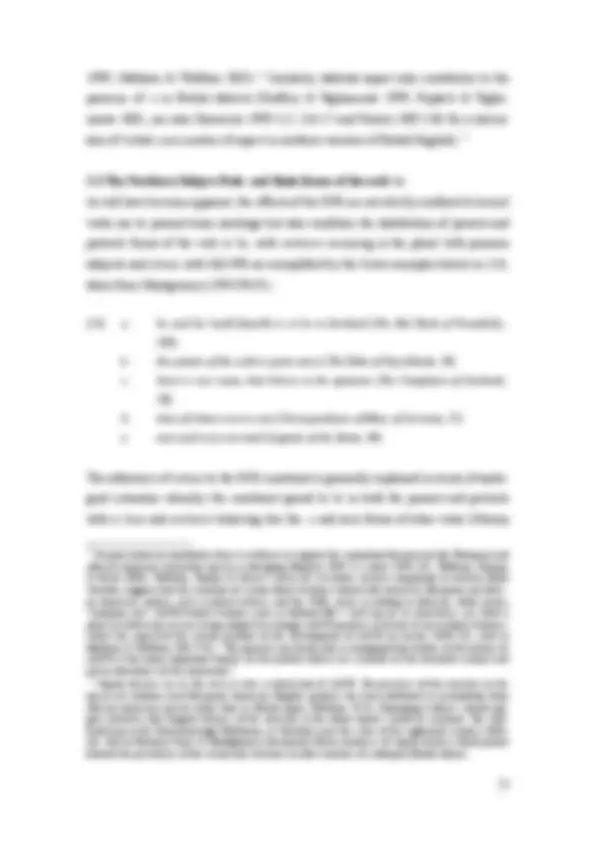
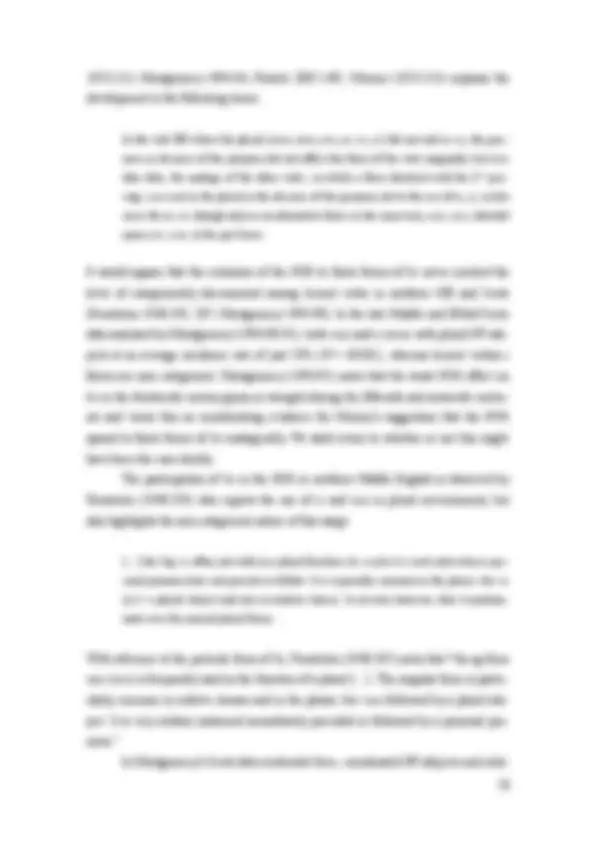
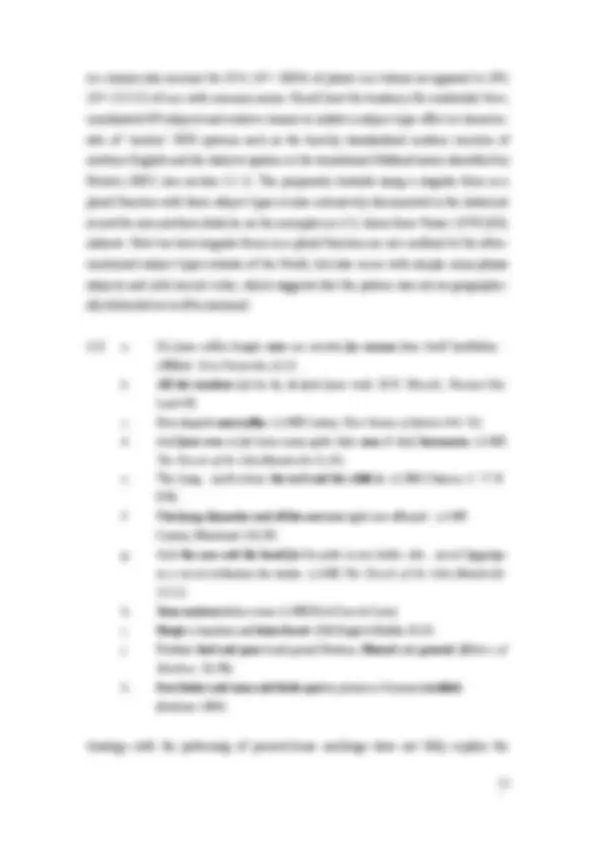
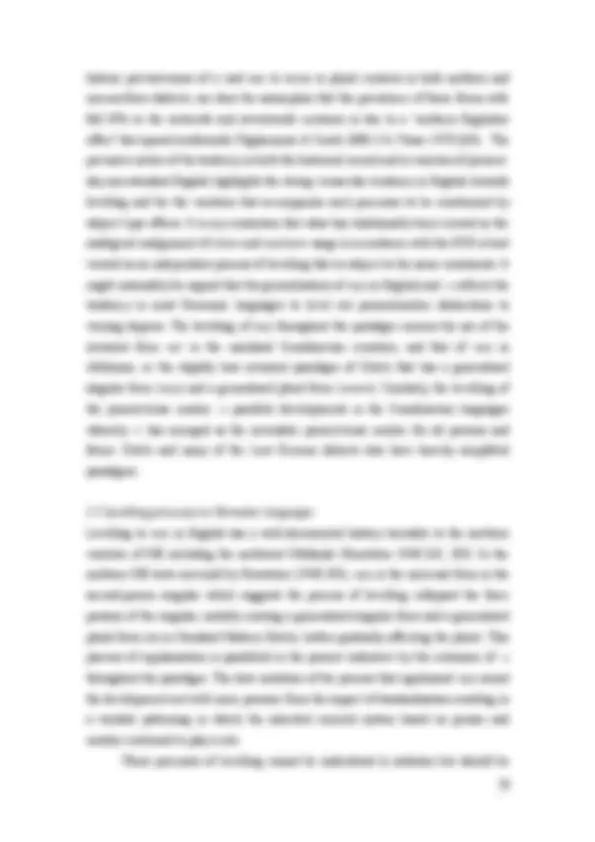
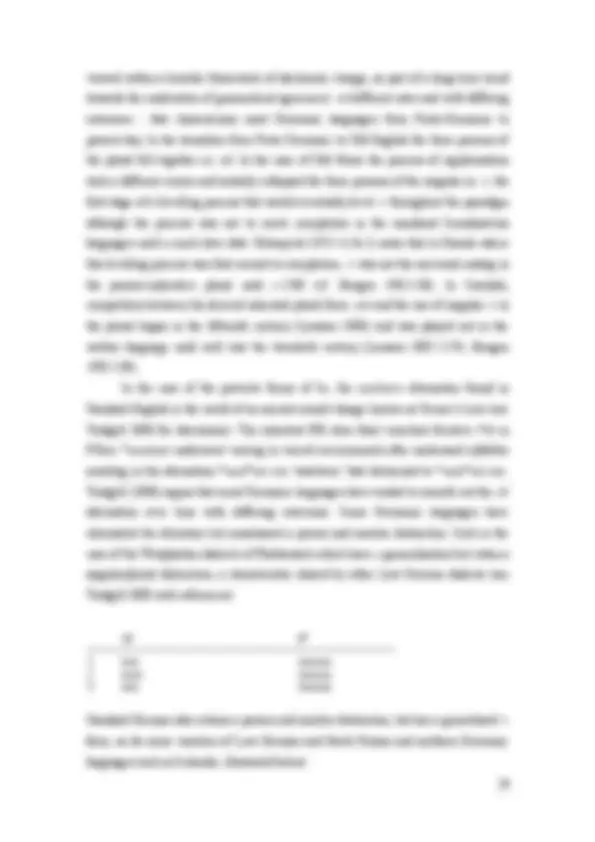
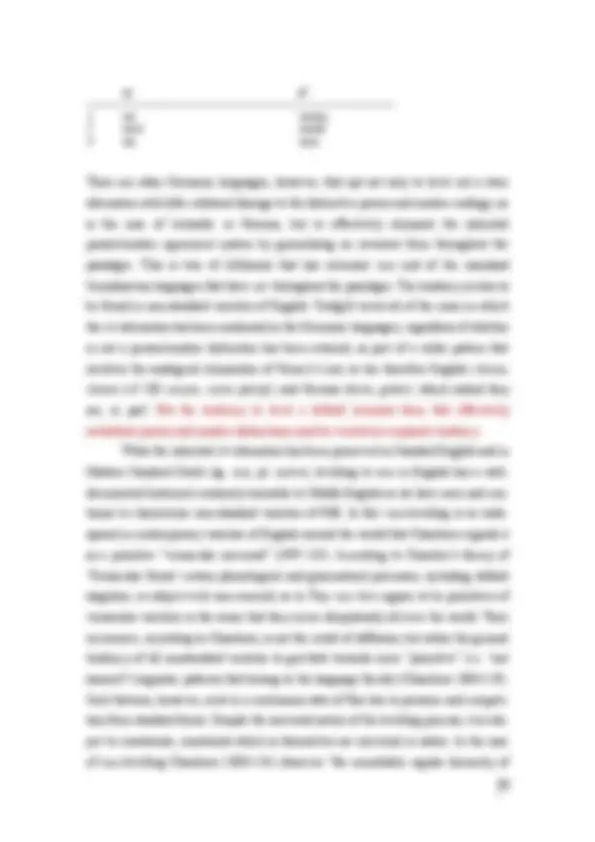
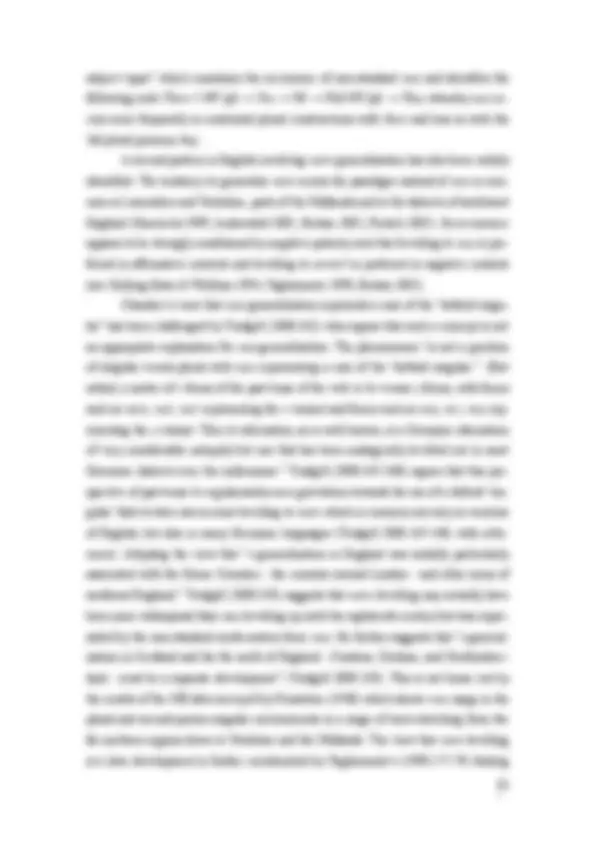
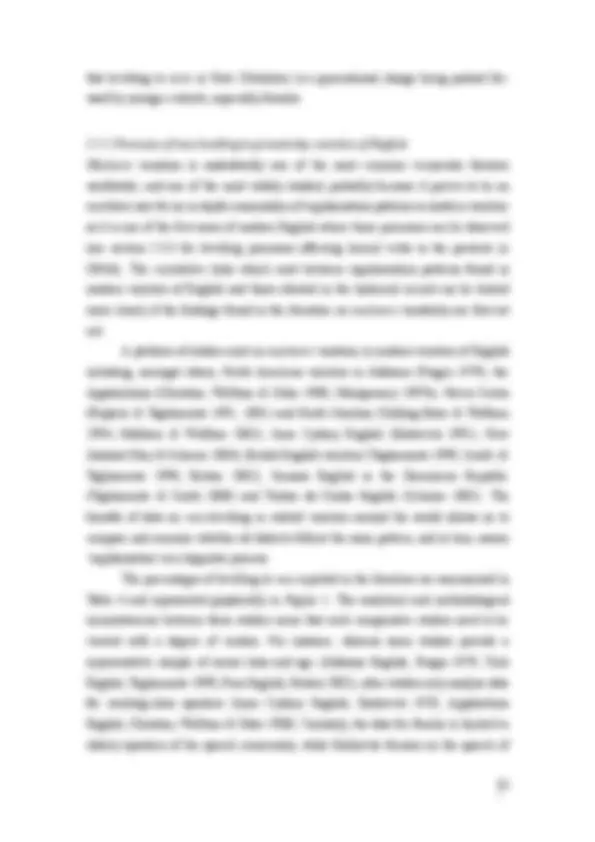
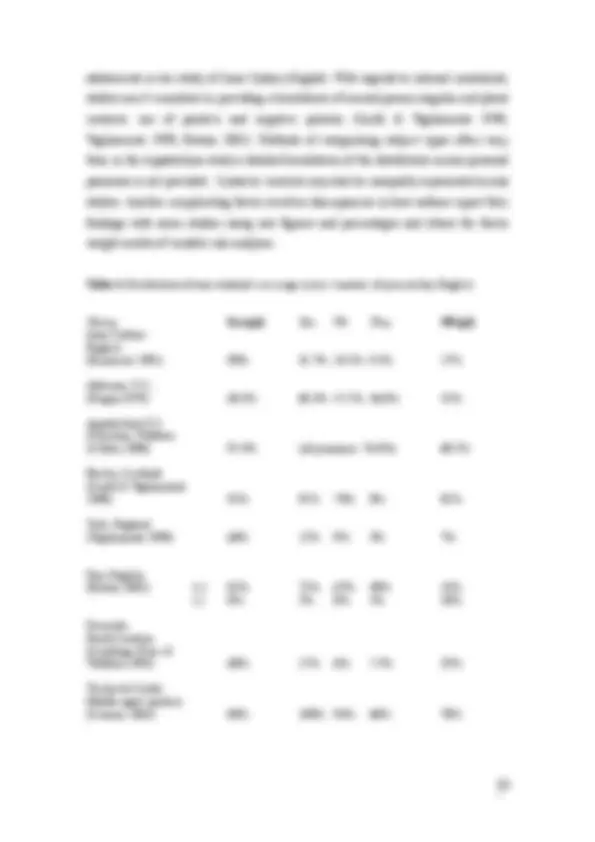
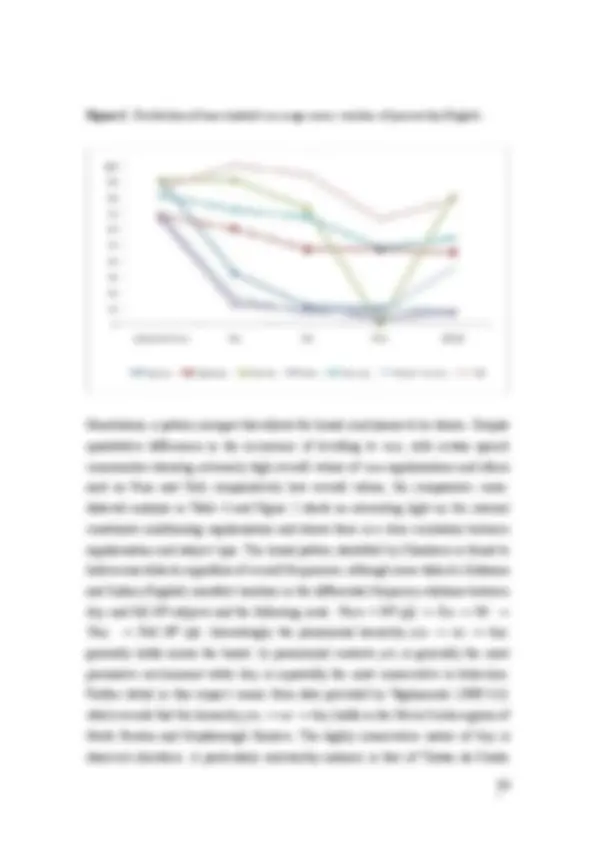
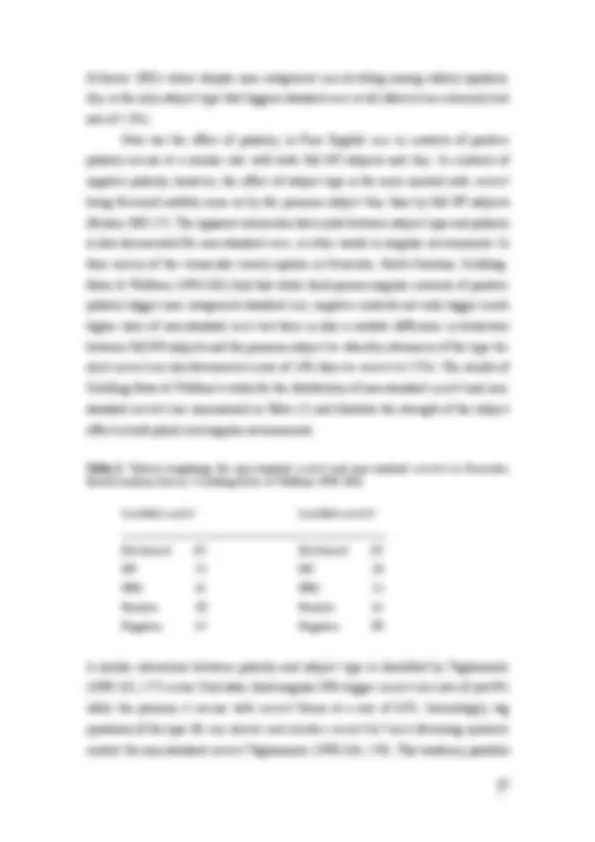
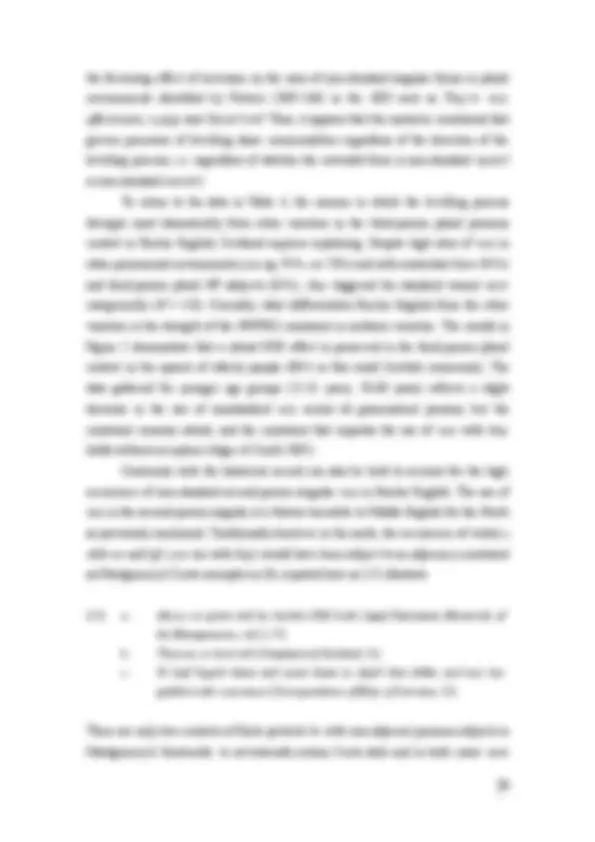
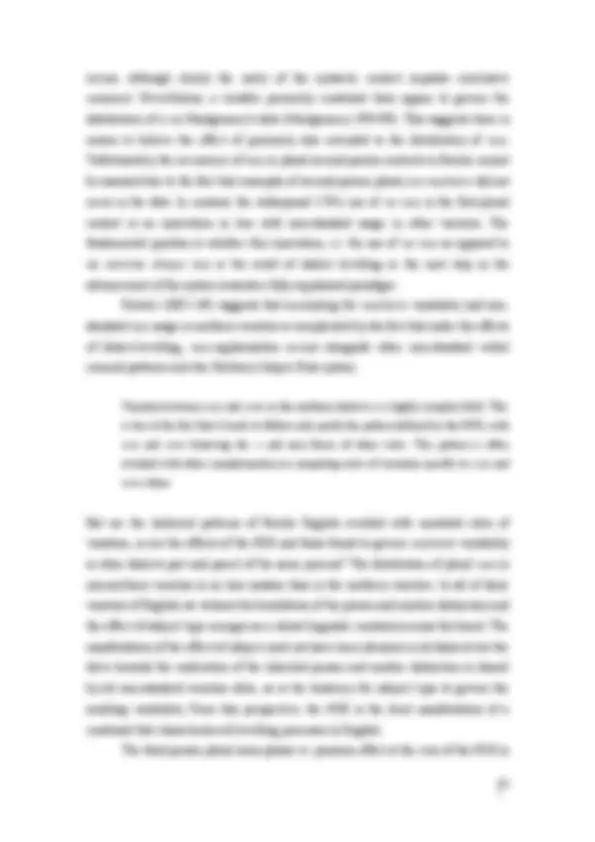
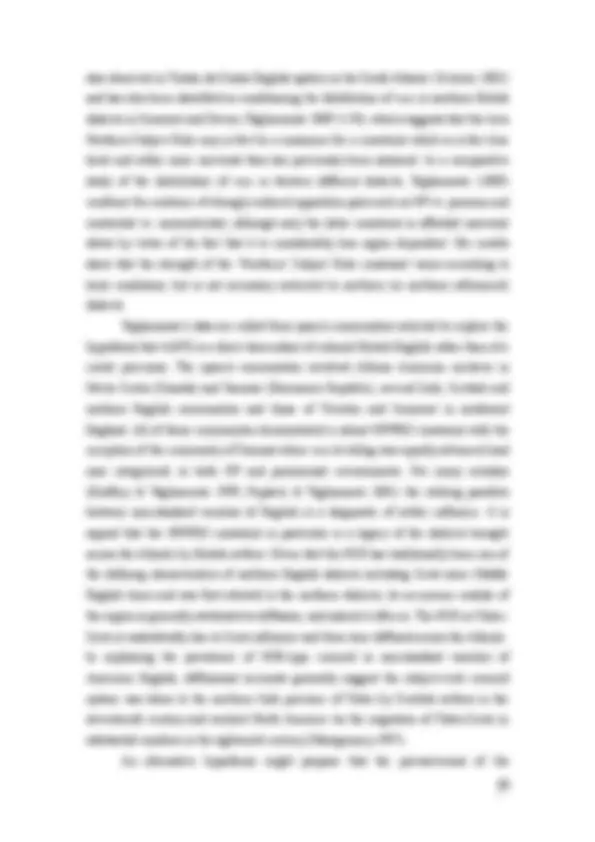
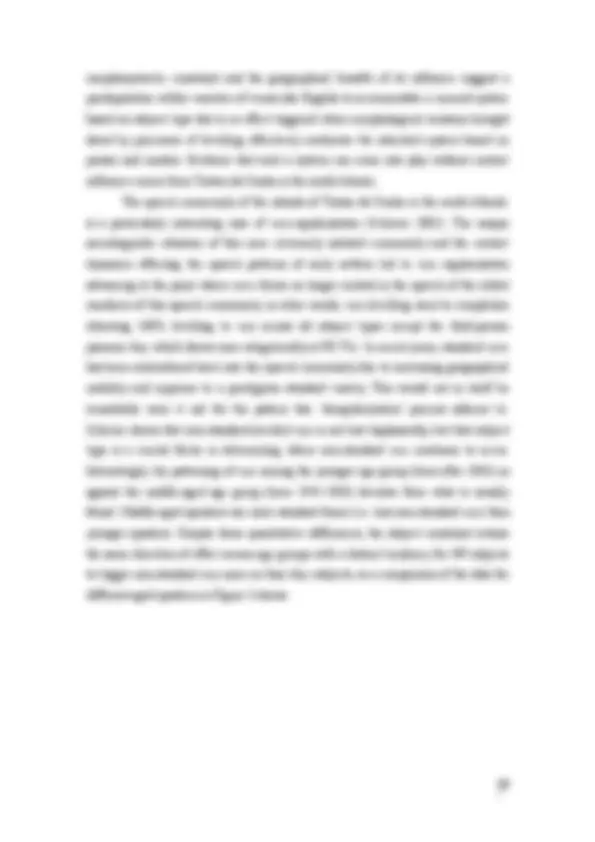
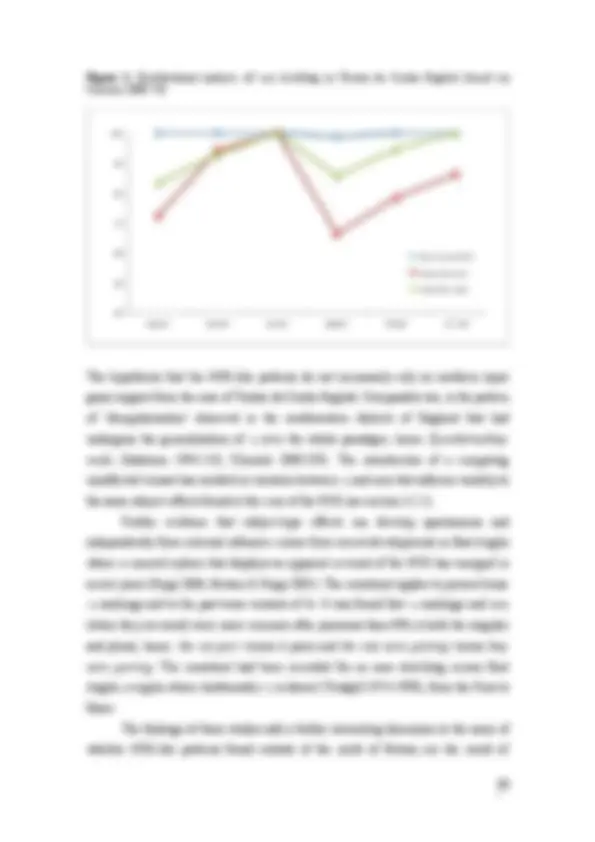
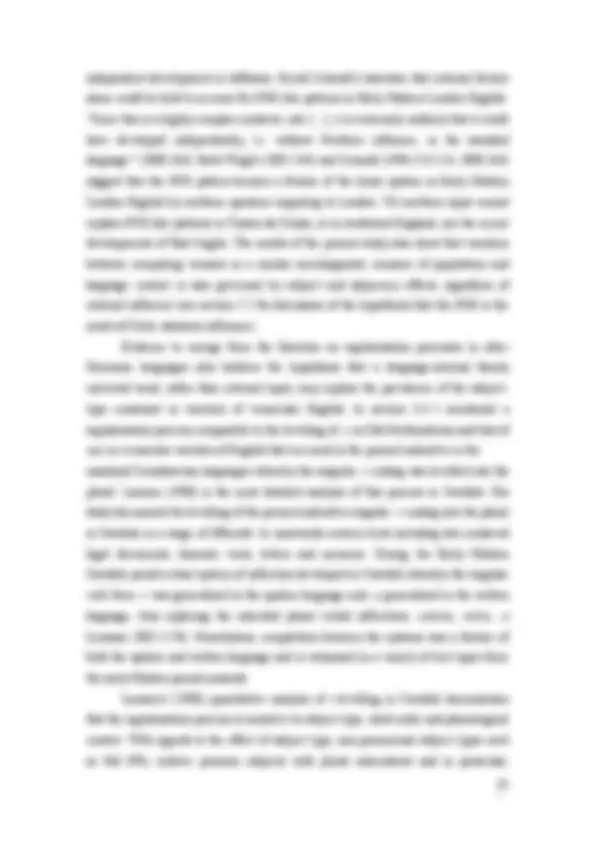
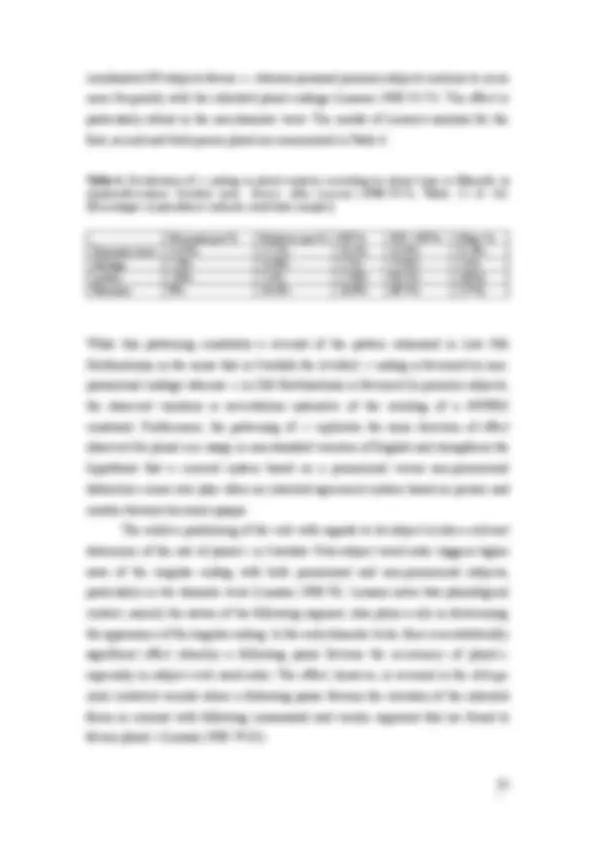
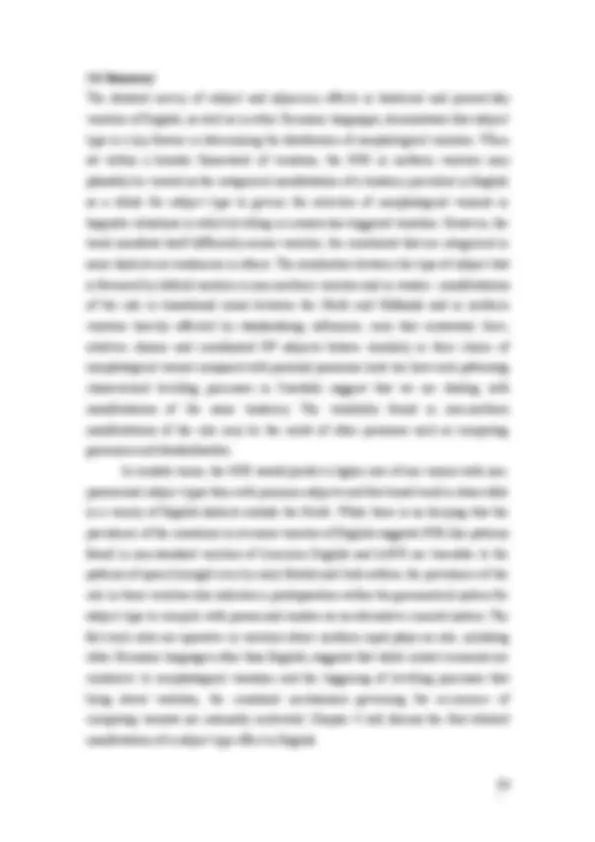
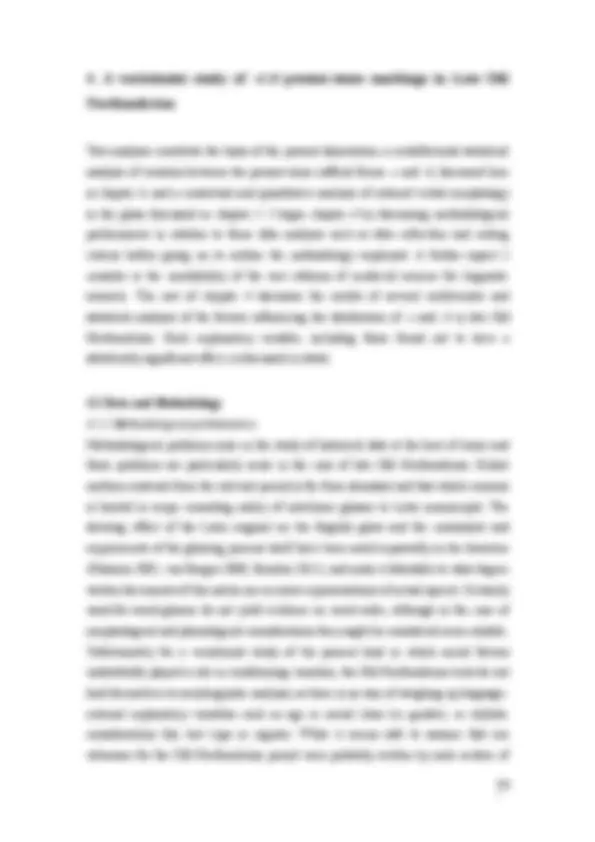
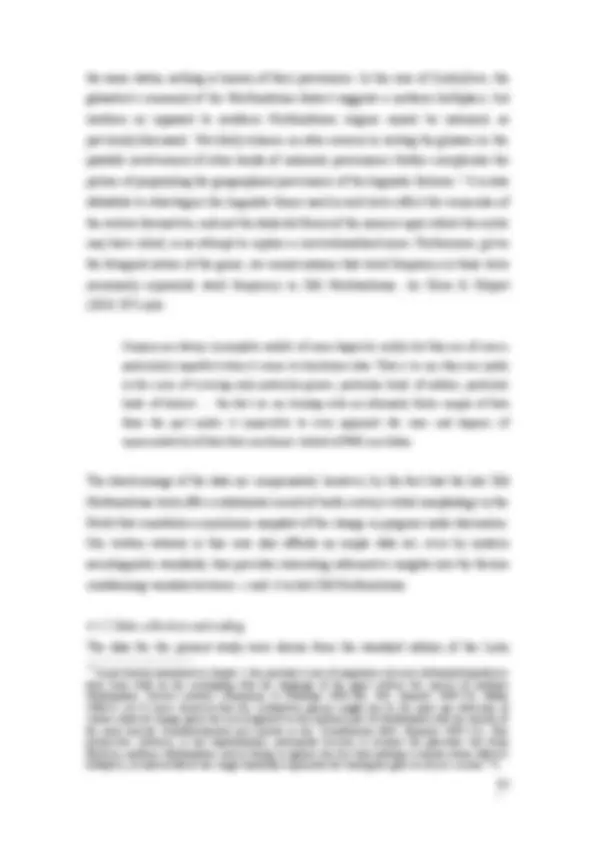
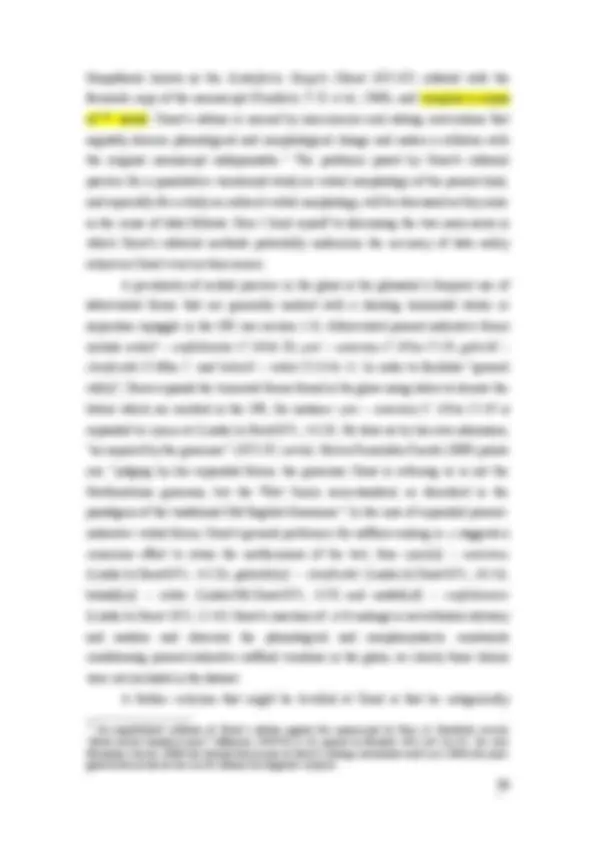
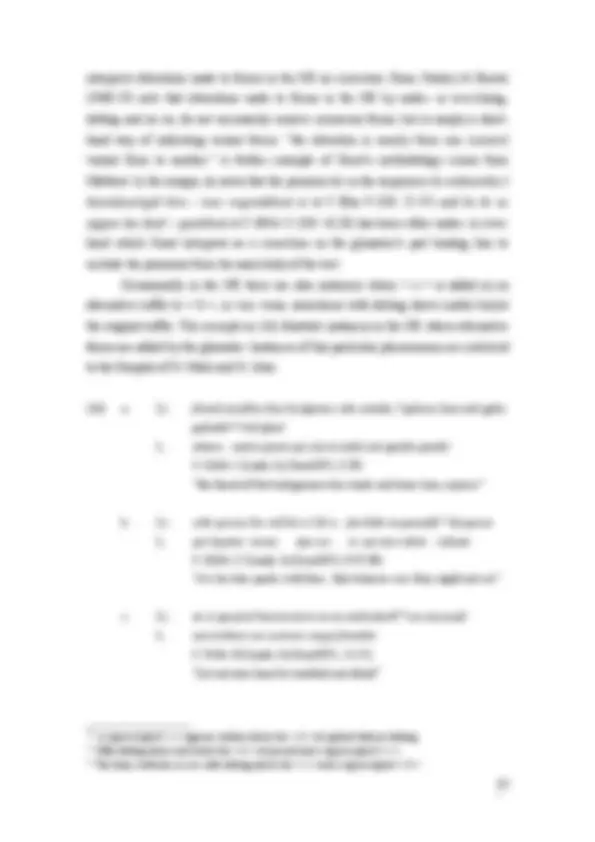
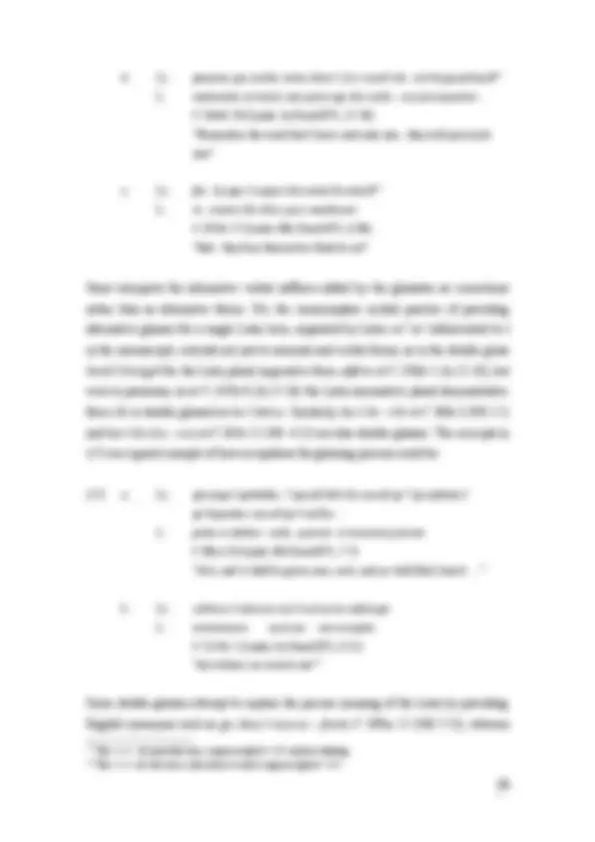
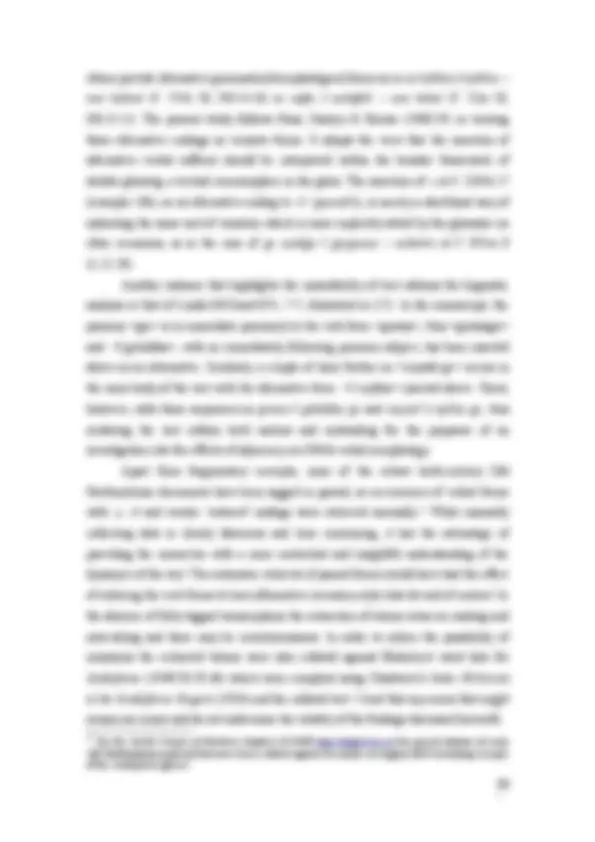
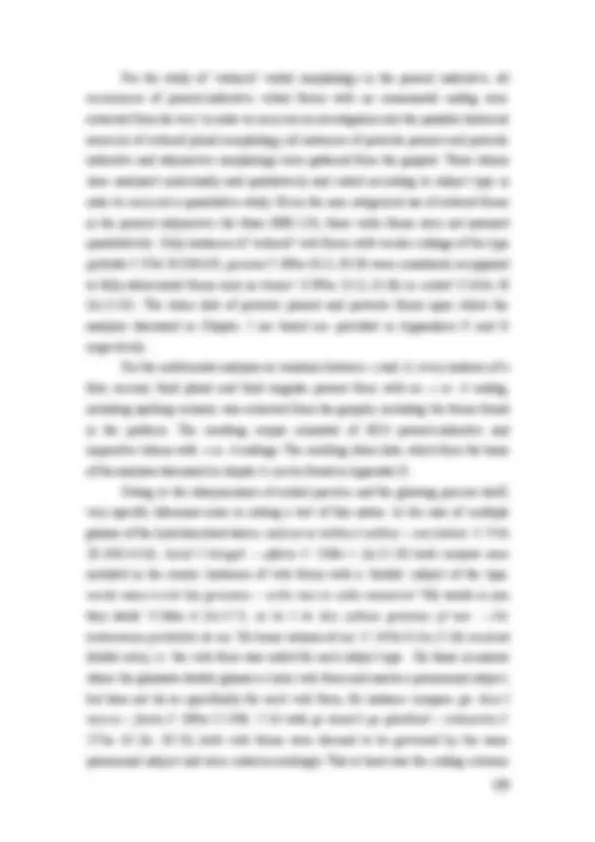


Study with the several resources on Docsity

Earn points by helping other students or get them with a premium plan


Prepare for your exams
Study with the several resources on Docsity

Earn points to download
Earn points by helping other students or get them with a premium plan
Community
Ask the community for help and clear up your study doubts
Discover the best universities in your country according to Docsity users
Free resources
Download our free guides on studying techniques, anxiety management strategies, and thesis advice from Docsity tutors
manuscript was glossed in Old Northumbrian, making Lindisfarne the earliest surviving translation of the Gospels in the English language and one of the few ...
Typology: Slides
1 / 322

This page cannot be seen from the preview
Don't miss anything!





























































































Facultad de Filología Departamento de Lengua Inglesa
Marcelle Cole Sevilla, December 2011 1
Tesis presentada para la colación del título de Doctora en Filología por la Lda. Dña. MARCELLE COLE Directora: Prof. Dra. Dña. JULIA FERNÁNDEZ CUESTA Sevilla, diciembre de 2011 2
1 Introduction and preliminaries 1.1 Introduction 1.2 Thesis and outline of the investigation 2 The manuscript of the Lindisfarne Gospels 2.1 The biography of the text 2.2 The authorship of the Lindisfarne glosses 2.2.1 Palaeographical evidence as a diagnostic for determining authorship 2.2.2 Linguistic variation as a diagnostic for determining authorship 2.3 The language of the Lindisfarne glosses 2.4 The sociolinguistic situation 2.5 The loss of present-tense suffixal -ð in English 2.5.1 Present tense markings in Old English 2.5.2 The proliferation of suffixal -s in English 2.6 Previous accounts of the origin of the -s ending 2.6.1 Sound change 2.6.2 Analogical influences 2.7 Summary 3 The Northern Subject Rule 3.1 The Northern Subject Rule in the North of England and Scotland 3.1.1 Northern Middle English and Middle Scots 3.1.1.1 Summary 3.1.2 Northern varieties during EModE and Modern English periods 3.1.2.1 Summary 3.2 The Northern Subject Rule outside the North 3.2.1 Early Modern London English 3.2.2 Southwest varieties of English 3.2.3 Summary 3.3 Extraterritorial Englishes 3.3.1 Irish English 3.3.2 The Northern Subject Rule beyond the British Isles 3.3.3 AAVE and the NSR 3.4 The Northern Subject Rule and finite forms of the verb be 3.5 Levelling processes in Germanic languages 5
4.4.2.1 Results and analysis 4.4.3 Summary 4.5 Lexical conditioning and lexical frequency effects 4.5.1 Measuring token frequency 4.5.2 Results 4.5.2.1 Word specific effects 4.5.2.2 Frequency effects 4.5.3 Summary 4.6 Discussion 5 Reduced verbal morphology in late Old Northumbrian 5.1 Reduced inflection in Old English dialects 5.2 Reduced present tense inflection in the Lindisfarne gloss 5.2.1 Present-indicative interrogative forms 5.2.2 Imperative forms 5.2.3 Present indicative forms 5.2.4 Summary 5.3 The historical source of present-indicative - e / Ø 5.3.1 Subjunctive verbal morphology 5.3.1.1 Conditional clauses 5.3.1.2 Purpose clauses 5.3.1.3 Temporal clauses 5.3.1.4 Summary 5.3.2 Preterite-present verbal morphology 5.3.3 Preterite verbal morphology 5.3.3.1 Preterite subjunctive verbal morphology 5.3.3.2 Preterite indicative verbal morphology 5.4 Summary 5.5 Discussion 6 Conclusions Appendices Appendix A. Statistical models Appendix B. Lexical items Appendix C. Low frequency lexical clusters Appendix D. s/ð tokens Appendix E. non-adjacent pronoun tokens 7
Appendix F. preterite-present tokens Appendix G. preterite tokens Abbreviations References 8
the assumption that the NSR was entirely lacking in Old Northumbrian stands on shaky grounds without further detailed analysis of the tenth-century northern writings, as has been pointed out in the literature (Benskin 2011: 170 ). As might well be imagined, such an endeavour is hindered by the fact that extant textual evidence from the period is far from abundant, and that which remains is limited in nature: the only substantial Northumbrian texts passed down to us are the interlinear glosses to the Latin manuscripts of the Lindisfarne Gospels and the Durham Ritual supposedly written by the same scribe, Aldred, in the second half of the tenth-century, as well as the Northumbrian part of the Rushworth Gospels gloss ( Rushworth^2 ), written by a scribe called Owun in the late tenth-century and heavily reliant on the Lindisfarne gloss. Yet despite their limitations, the glosses constitute a substantial record of late ONrth verbal morphology that provides important insights into the mechanisms of linguistic change. Although the study of the Northern Subject Rule in the early northern writings has barely been touched upon in the literature (as far as I am aware the matter has only been cursorily considered by de Haas 2008), morphological variation between - s as opposed to - ð in the late Northumbrian texts has been the object of numerous quantitative analyses (most famously Holmqvist 1922; Ross 1934; Blakeley 1949/ and Berndt 1956). It is striking, however, that the vast majority of these studies were written well over fifty years ago and the matter has not been thoroughly considered since. A reconsideration of present-tense marking patterns in Old Northumbrian that draws from the insights of recent research into variation and benefits from the application of modern statistical methodology is clearly long overdue. Furthermore, certain potentially relevant factors remain unexplored. For instance, while grammatical person and number have been identified as important factors in conditioning variation between the interdental and alveolar variants, the effect of subject type and adjacency on morphological variation in Old Northumbrian has hitherto been disregarded. This is despite the fact that research indicates that subject effects are a crucial factor in determining the selection of verbal morphology, not just in non-standard varieties of present-day English (cf. Chambers 2004; Tagliamonte 2009) and in varieties of EModE, as discussed above, but also most notably in Middle English northern dialect itself (McIntosh 1989; Montgomery 1994; de Haas & van Kemenade 2009; de Haas 2011). Using data drawn from the standard edition of the Lindisfarne gloss (Skeat 10
1871-87) collated with the facsimile copy of the manuscript (Kendrick, T. D. et al., 1960), this dissertation carries out a detailed study of the replacement of the interdental fricative by the alveolar fricative which differs both methodologically and in perspective from previous studies in several crucial ways. It constitutes the first study to simultaneously examine the effects of all relevant phonetic, lexical and syntactic variables on the process of change using statistical quantitative methodology. The study approaches the issue from an innovative hitherto disregarded perspective and considers factors such as lexical conditioning and morphosyntactic priming and pays particular reference to the subject and adjacency effects of the so-called Northern Subject Rule. By analysing the full breadth of possible language-internal explanatory variables on the development of the alveolar fricative ending in late Old Northumbrian and by applying statistical methodology, the study aims to elaborate and refine the overall view presented in early studies and set the Northumbrian developments within a broader framework of diachronic variation that will aid the verification of cross- linguistic generalisations and further our understanding of regularisation processes. It will be shown that the distribution of ONrth verbal morphology constitutes the first attested manifestation of a tendency in English for subject type to compete with person and number features for the function of grammatical material. In addition to a variationist study of -ð and - s forms, this dissertation also carries out a contextual and quantitative analysis of reduced morphology in the Old Northumbrian interlinear gloss to the Lindisfarne Gospels. It looks in detail at reduced forms in the Lindisfarne gloss and considers to what extent the nature and distribution of these forms are indicative of the incipient development of the ME - s versus - e / Ø NSR pattern in late Old Northumbrian. I also assess to what extent inflectional morphology already present in the northern dialects constitutes the historical source for the occurrence of - e / Ø / n in the present indicative. To this end, I posit that, not only present-subjunctive morphology, but also preterite-present and preterite-indicative verbal morphology played an important role in perpetuating the levelling of reduced forms and -n into the present indicative. I show that the subject and adjacency effects at the heart of the NSR appear not only to govern the occurrence of reduced morphology in the present indicative as a low frequency variant but also conditions the distribution of reduced verbal morphology in the preterite. A further question that will be examined in this dissertation involves the 11
adjacency effects that condition processes of levelling in Northumbrian are also found to govern non-standard agreement patterns and levelling processes in varieties of Early Modern and Present-Day English. This suggests that throughout the history of English there has been a tendency for subject type to compete with person~number agreement for the function of morphological material in linguistic scenarios where morphological variation occurs. Building on an hypothesis first put forward by Pietsch (2005), who suggests that the emergence of subject effects is likely in a situation where levelling and erosion has led to a breakdown of the inherited agreement system based on person and number, it is also my contention that the categorical manifestation of the effects of subject type, typical of northern Middle English and Middle Scots, and the variable effects reported for late Old Northumbrian in the present study, in addition to similar effects in EModE and in a wide range of non-northern and overseas varieties of PdE, should be viewed as manifestations of the same agreement phenomenon. Namely, a concord system based on a pronominal versus non-pronominal distinction rather than on person-number features typically characterizes the patterns of variation that appear when covariant forms compete in the same environments. The fact that similar constraints are found to condition comparable processes of levelling in other Germanic languages such as Swedish suggests that such processes and the constraints that govern them reflect family universal tendencies. From this perspective, while contact scenarios of population and language contact are undoubtedly conducive to triggering processes of regularisation and morphological simplification, the syntactic constraints that govern the resulting variation are internally motivated and require no external input. The pattern and strength of this tendency need not manifest itself identically in varieties however and will vary according to the influences of the local setting. With regards to its organisation, this dissertation is structured as follows. In chapter 2, I consider the sociolinguistic and cultural milieu of the Lindisfarne Gloss and issues relating to its authorship before moving on to consider the innovative nature of the language employed and previous hypotheses posited to explain the origin and proliferation of the innovative alveolar variant. Chapter 3 outlines the workings of the Northern Subject Rule and its history in northern England and Scotland since the Middle English period. I go on to discuss the presence of Northern Subject Rule concord in EModE and in a wide range of overseas varieties of English and non- northern varieties of British English. The chapter aims to serve as an overview of the 13
constraint from Middle English through to Present Day English, and as a point of comparison with manifestations of the rule in late Old Northumbrian. Chapter 4 discusses a detailed statistical analysis of variation between -s and -ð in which the full cohort of possible explanatory variables are considered. In chapter 5, I look in detail at the distribution of reduced forms in the Lindisfarne gloss with the aim of assessing whether there are signs of the incipient development of the Middle English NSR pattern in late Old Northumbrian and to what extent inflectional morphology already present in the northern dialects constitutes the historical source for the occurrence of - e / Ø / n in the present indicative. I conclude the dissertation with a summary of the main conclusions and a brief discussion of future lines of research. 14
tenth century itself was to witness the elaboration of further glosses in addition to Lindisfarne , those added to the Rushworth (or Macregol ) Gospels , by two hands, in the Mercian dialect ( Rushworth^1 ) and the Northumbrian dialect ( Rushworth^2 ) and reliant on the Lindisfarne glosses as a source. A further translation of the Gospels in the West Saxon dialect, known as the West Saxon Gospels , is also preserved in a twelfth-century copy. As Brown (2003:96) succinctly puts it, “The spirit of evangelization that engendered such an openness to spread the Word by any means was very different to the official tolerance encountered by Wycliffe and Tyndale in the late Middle Ages.” 2.2 The authorship of the Lindisfarne glosses The glossator of the Lindisfarne gloss has traditionally been identified as a priest named Aldred, a member of the St Cuthbert community. Aldred is also attributed with having glossed the tenth-century Latin collector the Durham Ritual at a later date (Ross, Stanley & Brown 1960:24), although as Skeats points out, a comparison of the manuscripts might suggest otherwise (1871-87, Preface to St John: ix). In the colophon he added to f. 259r of the Lindisfarne Gospels , Aldred takes credit for having written the glosses and associates his work with members of the community who were believed to have originally made the Lindisfarne Gospels : Eadfrith, Bishop of Lindisfarne (698-
‘Æðilwald’ for the name ‘Aethilwald’, also bolsters the view that Aldred may have copied them from different sources, while simultaneously using forms he was familiar with (Brown 2003:95). Nees notes how the practice of including colophons and dedication passages rose in popularity during the tenth century and that the dedications found in books presented to the community of St Cuthbert in the early tenth century would have provided Aldred with an ample source of potentially influential material. On balance, it seems that although there is no way of proving that Aldred’s colophon was based on earlier material, the evidence conspires to suggest that elements of an earlier source or sources were incorporated into his colophon; a conclusion that has important implications for the authorship of the gloss itself. Considerable palaeographical and linguistic debate has arisen as to whether the interlinear gloss written in Old Northumbrian was the work of a single hand, as Aldred’s colophon would lead us to believe. Brunner (1947/48) outlines the two broad perspectives that exist in the literature with respect to this contentious issue. The first, favoured by Bouterwek (1857); Stevenson & Waring (1854-1865) and Skeat (1871-87) is that the gloss was the work of two or more scribes speaking different dialects. Only this in their opinion would account for the wealth of variant forms in the gloss and the restriction of particular variant forms to certain parts of the text. The involvement of more than one hand would also explain certain palaeographical and orthographical inconsistencies such as apparent changes in handwriting, so too, the change from red ink to brown from John 5:10 onwards and the use of v for u and w in this latter section (Bouterwek 1857, discussed in Brunner 1947/48:32). The opposing viewpoint is the palaeographical one held by Maunde Thompson & Warner (1881-1884), Millar (1923), Ker (1943) and Ross, Stanley & Brown (1960) who are unanimous in regarding the whole gloss as the work of the same man, who they take to be Aldred, based on the assumption that the colophon proper was indeed an autobiographical statement by Aldred. The palaeographers’ translation of Aldred’s colophon is also crucial to informing their stance. Consider their translation of part of the last section of the colophon (Ross, Stanley & Brown 1960:10): Alfred p’sb’r indignus et misserrim’ mið godes fultu’mæ 7 sc’i cuðberhtes hit of ’gloesade on englisc. 7 hine gihamadi mið ðæm ðríim dælu’. Matheus dǣl gode 7 sc’e cuðberhti. Marc’ dæl ðæm bisc’. 7 lucas dæl ðæm hiorode 7 æhtw^ ora seo/ulfres 17
203v, i.e. at the end of Luke, which effectively distinguishes John from the other three gospels, and, as it happens, parallels the distinction drawn by Aldred himself in the colophon between the glossing of the first three gospels and the glossing of the fourth (Ross, Stanley & Brown 1960:23): [there is] some evidence that the Gloss falls into two main parts, dividing at ff.203r/203v, that is, at the end of St. Luke’s Gospel. Here
its composition and may have copied parts of the gloss from other sources (1960:11, 22). Brown (2003: ***) further explores the possibility that although Aldred’s gloss is essentially his own composition and is based on the Lindisfarne text (certain errors derived from the layout of the original Latin text in Lindisfarne show this must have been the case, cf. Ker 1957:216), he also “consulted one or more pre-existing translations and preserved their linguistic and orthographic forms alongside those of his own” (2003:100). She discusses the possibility, originally posited by Elliot & Ross (1972:65), that Aldred’s gloss to John may have been informed by Bede’s translation of the Gospel of St John and that his use of red ink in John might reflect a conscious effort to honour such a prestigious source. More significantly, Boyd (1975:52 quoted in Brown 2003:97) draws attention to a marginal note inserted by Aldred at f.255 rb 22 which reads ‘post /.i. est in die examines iudicii. Districti iudicis ~ ðus beda ðe bróema bóecere cuéð ‘thus said Bede the famous scribe.’ The marginalia not only confirms Bede as one of Aldred’s sources of scholarship, but may also, as Brown suggests, constitute proof that Aldred was consulting pre-existing vernacular translations of the Gospels, such as Bede’s translation of John. In other words this marginal note may acknowledge a Bedan gloss. The use of red ink is also taken up by Skeat, who points out that its use is not confined to the Gospel of St. John, but also occurs in isolated glosses elsewhere in the gloss, namely between ff. 3v-5v and at f. 141va 3. In these cases the entries made in red ink involve alterations and corrections and appear to be the result of a general revision carried out once the gloss to John has been completed (Ross, Stanley & Brown 1960:24). Skeat attributes this superintending hand to Aldred (Skeat 1871-87: Preface to Luke: vii): Another peculiarity is the occasional use of red ink, […], where a word has been supplied by the glossator Aldred, who seems merely to have superintended the glossing of the first three gospels, but to have glossed the fourth gospel himself for the most part, as it is chiefly written in red ink, and has certain orthographical peculiarities. That this may have been the case is borne out by Ross, Stanley & Brown’s (1960:24) observation that the abbreviation <· ł ·> as opposed to < ł > occurs for ‘vel’ in these red corrections. This variant makes its appearance for the first time in the gloss itself at 20